Sustainability Report 2022










Contents Letter to stakeholders 2 Chapter 1 Latteria Montello: a family history of over 70 years 4 1.1 Latteria Montello: an Italian tradition 6 1.2 Company organisation 10 1.3 Our values and corporate culture 11 1.4 Economic performance of the company 18 1.5 Stakeholder mapping and membership in industry associations 20 1.6 Materiality analysis and material topics 24 1.7 Latteria Montello’s commitment to sustainable development 30 Chapter 2 Quality and transparency 36 2.1 Our commitment throughout the supply chain 38 2.2 Guaranteeing the product and the health of consumers 42 2.3 Complete and transparent communication 50 Chapter 3 Our commitment to the environment 52 3.1 Our responsibility 54 3.2 Materials and packaging 55 3.3 Energy consumption and emissions 59 3.4 Water resource management in the production process 65 3.5 Waste management 66 Chapter 4 The importance of our people 68 4.1 People at the core 70 4.2 Health and safety of workers 77 4.3 Training and development 80 Chapter 5 Responsibility to our communities 82 5.1 Latteria Montello’s initiatives and social commitment 84 Note on methodology 90 1. Contents and scope of the Report 91 2. Main calculation criteria 92 GRI Content Index 94
LETTER TO STAKEHOLDERS
Ever since Latteria Montello was founded more than 70 years ago, we have always taken care, and above all, responsibility, for the local areas and communities which we work and come into contact with every day. Our actions have always been guided by absolute respect for the environment that surrounds us, supporting the participants of the supply chain and the communities with which we interact, in order to leave future generations a better, more sustainable and fairer world. In keeping with this concept of sustainable development and through strategically integrating it within our activities, we wish to ensure consistency in the actions we have undertaken to date and set new, ambitious goals to steer our growth. Sustainability, as well as being the response to the environmental and social issues of our time, has simultaneously become an undertaking for companies that aspire to continue creating value in the long term. Concious of these challenges and the related opportunities associated with doing business sustainably, we have chosen to make sustainability a key lever to support our corporate growth path.
We are therefore extremely proud to be able to present the first edition of Latteria Montello’s Sustainability Report, the first organic account of our commitment, our goals and our sustainability performance, in which we not only provide evidence of the activities carried out during the two-year period 2021-2022, but also convey the deep commitment of our Family and all of our employees.
We work every day with care and dedication, making products that continue to follow dairy tradition and passion – values in which we have always believed. With the path that this Sustainability Report inaugurates, our commitment is to be transparent to our stakeholders, recounting and reporting on our achievements and goals.
By constructing a path based on the best practices of our industry and on accountability with regard to our sustainability goals, we have also decided to commit ourselves to ensuring that this undertaking is carried out responsibly over time, translating our values into concrete actions within a Sustainability Plan. The path we have embarked upon is a daily commitment that involves all the participants in our supply chain in a process of continuous growth. It is one that allows us to continuously improve our offering, to create well-being and opportunities for our employees, to be a point of reference for the community. And one that will make each of our products ever more sustainable, as we invest in cutting-edge technologies that safeguard the environment, and instil that feeling of Italian family business that has always been the driving force behind our organisation.
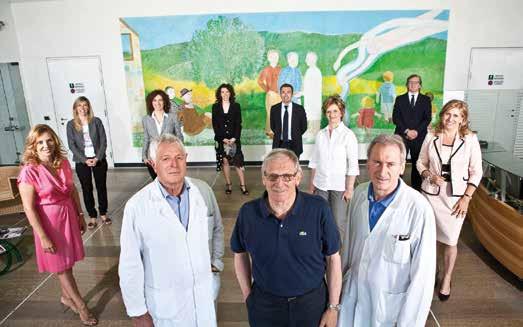
3 Letter to stakeholders
Silvia, Gianni, Alessandro Lazzarin
1 chapter



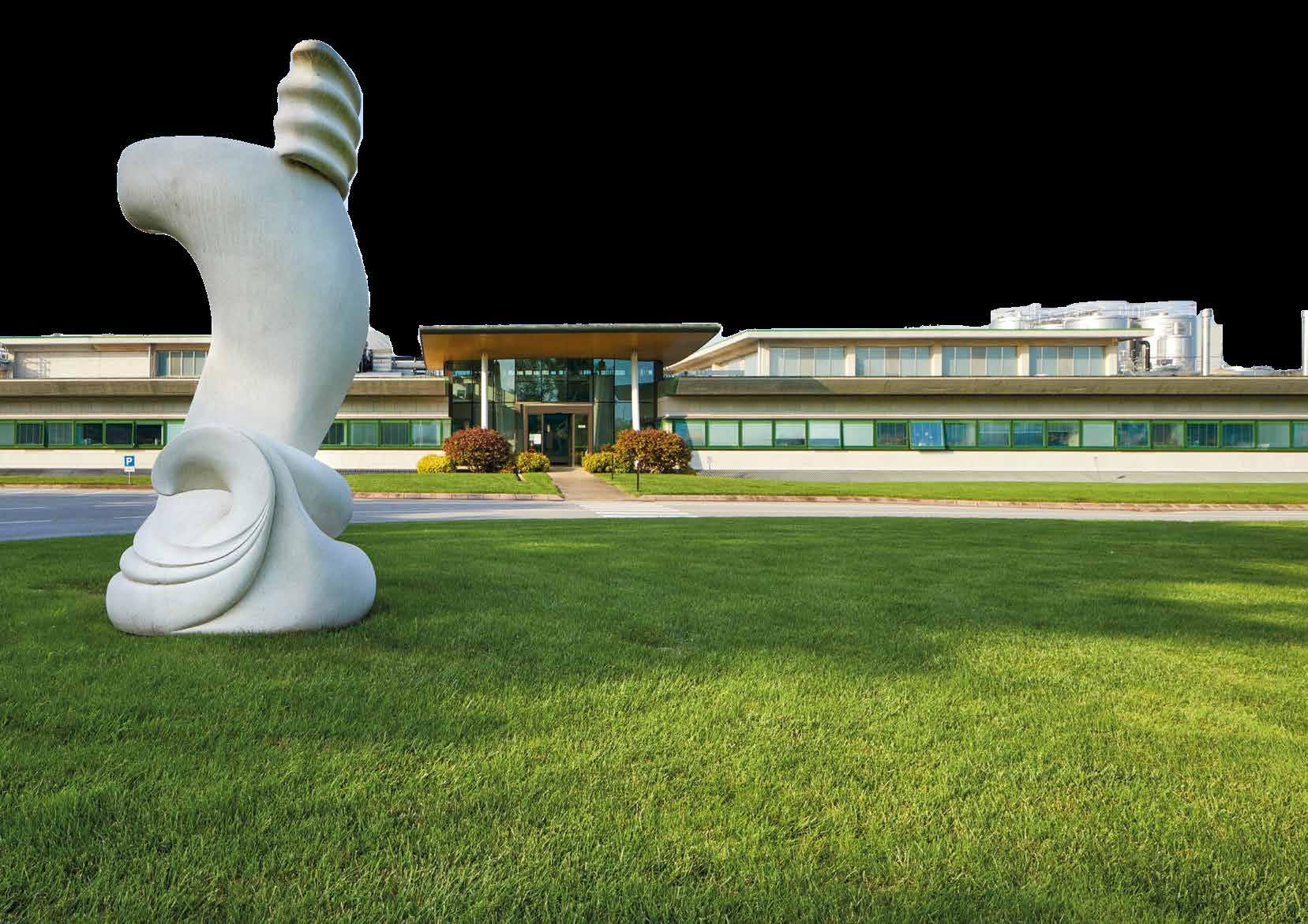


Latteria Montello: a family history of over 70 years.
1.1
LATTERIA MONTELLO: AN ITALIAN TRADITION

A love that would accompany the company’s success throughout the 1970s and 1980s, up to the inception of the Nonno Nanni brand.
The history of Latteria Montello began in 1947, when our first cheese was produced on the initiative of Giovanni Lazzarin, known as Nanni, inside a small dairy workshop in Giavera del Montello, in the province of Treviso. Since then, the evolution of our company has always followed the tradition of genuine cheese, handed down to the present day to bring goodness and freshness to the tables of Italians.
Within a few years, the workshop began to expand and, starting in 1955, milk no longer arrived at the dairy from local farmers brought with buckets and cans, but instead began to be collected from homes in Giavera and the surrounding villages. However, it was in 1970 that the first factory for the production of fresh cheeses was built, again in Giavera del Montello, and management of the company passed to Giovanni Lazzarin’s three sons: Luigi, Armando and Bruno, who took over the reins, continuing their father’s valuable teachings and his love for the art of cheese-making. A love that would accompany the company’s success throughout the 1970s and 1980s, up to the inception of the Nonno Nanni brand. Its representative colours – the green of lettuce and the red of tomato – were an idea of Bruno, a lover of painting and inspired by the works of Arcimboldo, aimed at celebrating the Mediterranean diet and its dietary benefits.
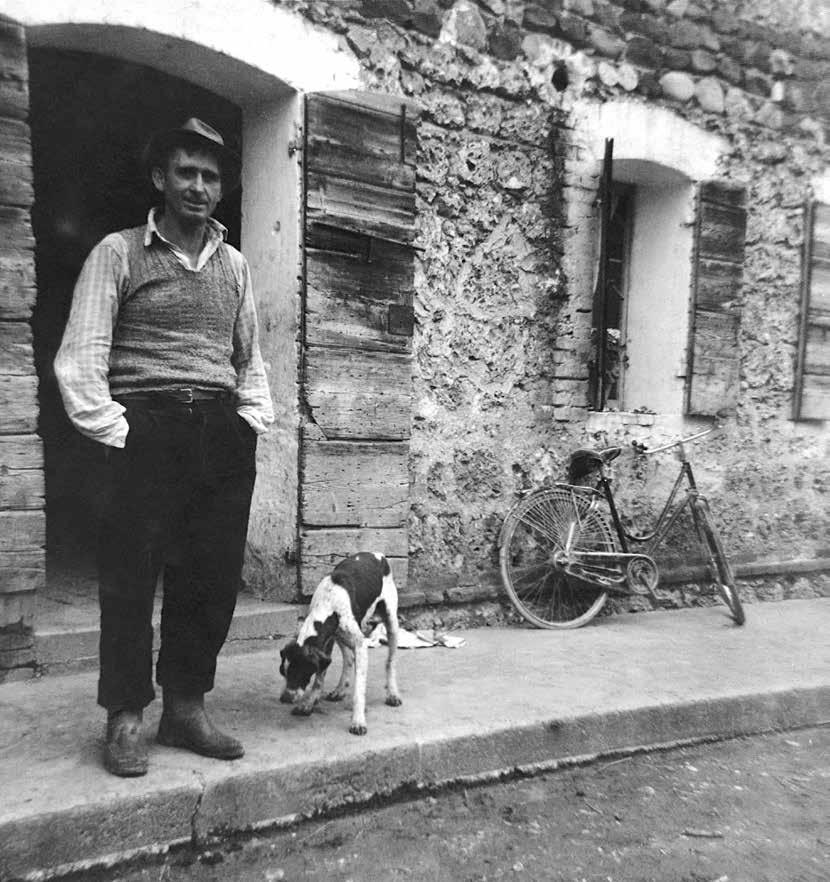
7 Chapter 1
Latteria Montello: a family history of over 70 years.
After more than 70 years of history, our organisation is a company at the forefront of production processes and consumer needs.

In anticipation of the company’s major expansions in the early 2000s, the factory gradually grew as dairy production increased and the range of products expanded, reaching 7,000 m2 . In addition to the production of stracchino, in 1988 the company’s product range was further expanded, with production starting of Squaquerello Nonno Nanni , a sweet and creamy cheese that would also become one of the company’s most loved. Meanwhile, the distribution of Nonno Nanni branded products spread throughout Italy, becoming a symbolic brand of the Italian table, thanks also to continuous innovations in product quality and preservation techniques. It was 1989 when the company implemented a new type of packaging which could better preserve the quality and freshness of stracchino during transport. In 1994 the company further widened and diversified its product range, starting production of gnocchi and crespelle, with the launch of a second brand: Nonna Rina . In the meantime, the expansion of Latteria Montello continued, establishing itself more and more as a solid and firmly grounded entity in the Treviso area, exceeding 100 employees and doubling its production area to 12,000 m2 . The following year, in 1995, Latteria Montello changed its name to become an S.p.A. (public limited company) and began to distribute its products abroad. During this period, the company built new plants to support its production growth, and replaced the first coagulator, installed in 1991, with a more modern and larger one.
In the early 2000s new products were launched, such as Stracchino with Yoghurt Stracchino with Probiotic Ferments, as well as Nonno Nanni Robiola , introducing innovative products for the first time within a sector that had always been considered
traditional. In 2001, the company also increased its production capacity by further upgrading the coagulator, which became the largest in Europe for soft cheese production .
In 2008, the first Nonno Nanni television advertisement was aired, which was to become a classic of Italian marketing, with stracchino cheeses flying over rural Italian landscapes to reach family tables, accompanied by the now-famous soundtrack of Latteria Montello’s most famous brand.
After more than 70 years of history, our organisation is a company at the forefront of production processes and consumer needs. In 2014, we developed a new line of lactose-free products and, the following year, launched the company’s first spreadable cheese, which is now also available in a light version.
Today, Latteria Montello stands as a leading company within the Italian dairy industry, with a factory covering an area of over 20,000 m², with an additional 5,000 m² of purifier and 2,000 m² of space reserved for services.
Attention to the quality of our products has always accompanied our development, respecting dairy tradition and the sustainability of our production processes. The company’s products are now particularly well known in the area thanks to the strength of the Nonno Nanni brand. Through its packaging, communication and advertising, it represents the face of the company, its history, and the values that Latteria Montello aims to uphold and adopt on a daily basis.
We approach this first Sustainability Report with the due responsibility to voice and shape our goals in a truthful and transparent manner declaring our performance and goals for the future.
OVER
of factory area 20,000 m 2

9 Chapter 1 Latteria
a
history of over 70
Montello:
family
years.
1.2 COMPANY ORGANISATION
The registered office of our company has historically always remained in Giavera del Montello (Treviso).
Latteria Montello S.p.A. is a family-run company operating in the dairy sector. Through our state-of-the-art factory with high production capacity, highly qualified staff and certified quality processes, we have succeeded over the years in carving out a leading role for ourselves in the stracchino market.
The registered office of our company has historically always remained in Giavera del Montello (Treviso), where our main production and product development activities also take place.

From a corporate point of view, Latteria Montello is a Società per Azioni (public limited company) administered by a Board of Directors (hereafter also referred to as the “BoD”) consisting of a minimum of two to a maximum of seven members, including the Chairperson of the Board of Directors, and a Board of Auditors consisting of three regular auditors, including the Chairman of the Board of Auditors, and two alternate auditors, appointed by the Shareholders’ Meeting. In addition to these bodies, there is a Supervisory Board consisting of two external members.
The Board of Directors is vested with all powers of ordinary and extraordinary administration, except those expressly reserved to the Shareholders’ Meeting by law or by the Articles of Association. The organisational system is based on a distinct division of activities and responsibilities shared by the family and corporate management, which over the years has been inserted to run the company and support the business.
Management activities are carried out through the traditional system of administration and control and, therefore, the Board of Directors, Shareholders’ Meeting and Board of Auditors are periodically summoned and convened.
As of 2019, the company is subject to the management and coordination of the parent company Lab S.r.l.

1.3 OUR VALUES AND CORPORATE CULTURE

We are deeply attached to our values such as respect for the law and fundamental human rights , guided by clear and transparent rules and in harmony with the external environment and community objectives. These values are at the heart of our corporate culture and make us able to dynamically respond to the challenges of a world that is increasingly attentive to the impacts of industrial processes on society and the environment. We are therefore working on a daily basis to improve our products and reshape our strategy.
Through our Code of Ethics, we have developed a clear corporate culture that provides a framework that guides our daily behaviour and helps to sustain value in the medium to long term, benefiting all our stakeholders.
11 Chapter 1 Latteria Montello: a family history of over 70 years.
Our culture is what has always made us capable of responding in the best possible way in these times of rapid change.
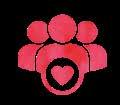
This culture is formally defined and is integrated and applied every day through the behaviour of employees, who guide our way of doing business and are a determining factor of our success. In addition, managers are also called upon to act by adopting exemplary behaviour, demonstrating efficiency, loyalty and competence, and internally promoting the values by which the company is inspired.




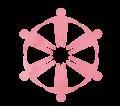

Our culture is what has always made us capable of responding in the best possible way in these times of rapid change; while always retaining our values at the forefront, we have been able to reshape our strategy as well as our products, constantly driven by awareness and a strong sense of responsibility for the art of cheese-making that we have been handing down for generations, together with the values that represent our roots:
Tradition and care: we pass on our love for the art of cheesemaking, making products that still follow the secrets taught by our grandfather, handed down by three generations in over 70 years of history; we always do things to the best of our ability, with care and dedication, striving to improve them over time, maintaining artisanal quality and respecting the values we have always believed in.
Closeness and humanity


Tradition and care
Reassurance and reliability


Goodness and quality: we spread our passion for good food, made with a few simple ingredients, while respecting the milk and the natural processing times, paying close attention to the production process. This is why every single bite of our products is a moment of pleasure and a true taste experience.

Inclusion: we bring people closer and create an atmosphere of unity and togetherness; we respect others without any form of discrimination, value diversity and stimulate the expression of everyone’s ideas.


through concrete actions, supporting suppliers in our supply chain and the wider community through social initiatives to help those people most in need. Our goal is to leave future generations a better, more sustainable and more equitable world.
Reassurance and reliability: we strive to be a point of reference for people, a reliable brand that conveys a reassuring sense of warm-heartedness.
Closeness and humanity:
we are committed to being close and attentive to our employees, consumers and customers; we always put our heart and soul into what we do to make products that can become part of everyone’s daily life, because they are made by real people; we believe in solidarity, which translates into openness to dialogue and sharing.
Chapter 1 Latteria Montello: a family history of over 70 years.
Environmental and social sustainability Inclusion
Goodness and quality
THE GOVERNANCE OF LATTERIA MONTELLO

PROMOTING THE COMPANY’S VALUES
Our corporate action is always conducted with respect for the law and fundamental human rights, guided by clear and transparent rules and in harmony with the external environment and community objectives.
RELATIONSHIPS WITH CUSTOMERS
Our commitment is to efficiently, courteously and promptly provide, within the limits of contractual provisions, high-quality products and services that meet the customer’s reasonable expectations and needs, and to provide product information so the customer can make informed decisions.
The principles that underpin our activities certainly include integrity, ethics and transparency – concepts that have always been the fundamental ingredient of the company’s success. Fairness and respect for the employees and families that are part of Latteria Montello, together with a sense of profound responsibility towards customers, the local area, and those affected by our activities, are the foundations upon which our management of the company has never stopped growing and evolving.
Consistent with this historical identity, we have endowed ourselves with a Code of Ethics which defines the behaviours to be maintained within the company and towards customers. The Code of Ethics , which is an integral part of our Organisation, Management and Control Model, governed by Legislative Decree 231/01
DEVELOPMENT OF HUMAN RESOURCES
We value people solely according to criteria of merit, of recognition and appreciation of abilities. We offer all individuals equal employment opportunities without distinction based on ethnicity, religion, opinion, nationality, gender, physical condition, age or social status.
GUARANTEEING THE PRODUCT AND THE HEALTH OF CONSUMERS
We aim to offer customers a range of products which are guaranteed in terms of quality and safety: we consider voluntary certification of processes and finished products to be essential.
for anonymous reporting of code violations directly to the Supervisory Board

No reports were received for the two-year period 2021-2022. Should significant critical issues emerge from such complaints, the Supervisory Board is responsible for promptly reporting them to the Board of Directors.
applies not only to the company’s employees and managers, but also to all those who work in the interest and for the benefit of the company, including consultants, intermediaries and business partners. During 2022, both the Code of Ethics1 and the Organisation, Management and Control Model2 were revised and approved by the Board of Directors in order to incorporate the relevant updates in this regard. Among the subject areas covered and regulated by the Code of Ethics are human rights, development of people in the company, child labour, conduct of business management, health, safety and environment, conflicts of interest, and transparency in carrying out our business activities. The document also provides a whistle-blowing mechanism that, through a dedicated online platform, allows
1 Latteria Montello | Code of Ethics - 12/12/2022 www.nonnonanni.it/azienda/codice-etico/
2 Latteria Montello | Organisation, Management and Control Model- 12/12/2022 www.nonnonanni.it/Azienda/Modello-di-Organizzazione-2023
In 2022, we introduced a new policy in order to guarantee our employees increasingly flexible working conditions: to this end, for roles that allow it, an individual supplementary contract has been prepared that offers the possibility of remote working for two days per month. This innovation is part of our corporate policies, which also include the Food Safety Policy, providing the necessary guidance to ensure compliance with HACCP requirements; the Quality and Environment Policy enabling us to pursue full compliance with quality, environmental and occupational safety regulations, as well as voluntary standards and product certifications; and, finally, our Sustainability Plan , which includes 54 initiatives linked to the 4 pillars of the sustainability journey we embarked on in 2022, in order to strategically integrate the areas of sustainability most relevant to our industry and business.
15 Chapter 1 Latteria
a family history of over 70 years.
Montello:
GOVERNANCE STRUCTURE
The family-run nature of the company is certainly an added value to the way our business is managed, contributing to its operations being shaped on the basis of trust in our employees. Indeed, the presence of the owners within the operations of Latteria Montello has always enabled us to promote and carry forward the initial values on which the company was founded by Giovanni in 1947. The generational transitions that have taken place over the past 70 years have ensured respect for tradition while simultaneously looking towards the future.
The Board of Directors consists of three executive members belonging to the Lazzarin Family, the family that has always owned the company, who also hold three managerial positions within it.
The BoD, which remains in office for three years, is appointed by the Shareholders’ Meeting and consists of two men and one woman as of 31 December 2022. The Shareholders’ Meeting ensures there is a three-year rotation of the positions held on the Board of Directors. There are no independent members. For the composition of this body during the two-year period 2021-2022, please refer to the table below.
In view of Latteria Montello’s nature as a family business, there is a Family Council, supported by an external guarantor. As of May 2022, the office of Chairperson of the BoD is held by Silvia Lazzarin and, for the three-year period 2022-2024, the operational delegations have been divided according to the following subdivision: Silvia Lazzarin, delegated to the Marketing and Communication department; Alessandro Lazzarin, delegated to the Operations and Environment department; Giovanni Lazzarin, delegated to the Sales department. The members of the Board of Directors of Latteria Montello S.p.A. sit on the same body as the subsidiaries Caseificio Tonon S.r.l. and Nonna Rina S.r.l.

When defining remuneration, the Shareholders’ Meeting decides on the remuneration of the Board of Directors, which, in turn, approves the remuneration of the other executives and the salary grids at clerical and blue-collar level, updated annually based on benchmark analyses within the dairy industry.
In line with the principles of sustainable development intrinsic to Latteria Montello’s corporate management, the Board of Directors has investigated the methods and opportunities related to sustainability reporting so as to ensure full compliance in its strategic and operational decisions. During 2021, the three members of the Board of Directors, together with the company’s managers and a selection of employees, even took part in a training course on the issues of sustainability and related strategic planning delivered by the Ca’ Foscari Challenge School, the business school of the Ca’ Foscari University of Venice
17 Chapter 1
Latteria Montello: a family history of over 70 years.
. 2021 2022 Gender No. No. Women 1 1 Men 2 2 Age group No. No. <30 -30 ≤ x ≤ 50 2 1 >50 1 2
1.4 ECONOMIC PERFORMANCE OF THE COMPANY
+11%

Through the Management Report and Financial Statements, we provide our financial performance and account for the creation and distribution of wealth to our main stakeholders, showing in monetary terms the relationship between Latteria Montello and the socio-economic system in which we are embedded, measuring the economic impact and our ability to generate and distribute wealth among the main categories of stakeholders such as staff, shareholders, lenders, the community and the public administration.
In 2022, the economic value directly generated by the company was €121,437,814 , an increase over 2021.
The directly distributed economic value for the year 2022, on the other hand, was €115,404,223, an increase of about 11% over 2021. Of this, the portion of the economic value of operating costs was €90,757,606 , mainly consisting of costs incurred for the purchase of raw materials and consumables, goods, costs for services, costs for the use of third-party assets and other operating expenses.


The portion of economic value distributed to our staff and employees was about 13% of the total directly distributed economic value for the year 2022. In terms of the value distributed to the public administration, in 2022, the total was €880,180, while there was an increase in the value distributed to capital suppliers, to which €131,571 was allocated, compared to €80,913 in 2021. Regarding the item for the value distributed to the community, for 2021 €96,310 was disbursed for donations , sponsorships to local and national bodies, representing a further contribution to the community and social fabric within which our factories are located.
For 2022, the economic value retained within the company was therefore €6,033,591

19 Chapter 1 Latteria
a family history of over 70 years.
Montello:
2021 2022 Directly generated economic value 110,186,038 121,437,814 Directly distributed economic value 103,637,090 115,404,223 Operating costs 72,391,909 90,757,606 Value distributed to employees 14,857,904 15,538,156 Value distributed to capital providers 80,913 131,571 Value distributed to shareholders 13,800,000 8,001,000 Value distributed to the public administration 2,430,336 880,180 Value distributed to the community 76,028 96,310 Retained economic value 6,548,948 6,033,591 Economic value distributed to our staff and employees
over 2021
Directly distributed economic value for the year 2022
13%
1.5 STAKEHOLDER MAPPING AND MEMBERSHIP IN INDUSTRY ASSOCIATIONS
Maintaining a constant and constructive dialogue is fundamental to achieving our goals and our mission.
In our day-to-day activities, we place crucial importance on our relationship with our stakeholders: maintaining a constant and constructive dialogue is fundamental to achieving our goals and our mission. For this reason, we have mapped our stakeholders, with “stakeholder” meaning any person who has an interest in Latteria Montello’s activities and who may influence or be influenced by our strategic decisions. We have then identified those most involved or influenced, and whose interests are considered during the various decision-making stages. Our main stakeholders are described below.

Media: public opinion, social media, news outlets

Public bodies and regulators: public administration, certifying and regulatory bodies, governments



Suppliers: service providers and contributing companies




Financiers: investors, banks and credit institutions, financial partners

Customers: participants in mass-market retail, retail and direct customers
Local communities: local communities, civil society, schools and universities, NGOs, environment

Employees: employees and partners, trade associations, unions

Competitors: agri-food consortia, competitor companies in the sector
Consumers: consumers and associations representing consumers
21 Chapter 1
of
70
Latteria Montello: a family history
over
years.
We have created the Nonno Nanni Community, a space for sharing with our most loyal consumers.
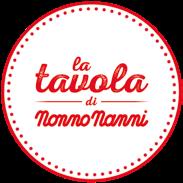
With respect to all our stakeholders, we are aware of the importance of maintaining an open dialogue and communication channel regarding the company’s performance and our activities, and we believe that we can only fulfil this through dialogue and cooperation, being willing to receive suggestions from them and able to develop projects with shared values.
In order to foster this kind of relationship, we have created the Nonno Nanni Community, a space for sharing with our most loyal consumers. The community is accessible via our web page3 and offers special activities with specific focuses relating to a variety of topics, particularly family, environmental sustainability and good food. For each successfully completed activity, registered users can accumulate digital tokens which they can use to claim prizes, such as Nonno Nanni gadgets.

Starting in 2008, we began supporting the Nonno Nanni brand in the mass media, with dedicated communication on TV, print and radio, which have contributed to strong growth in brand awareness and to making Nonno Nanni one of the most beloved fresh cheeses on the tables of Italians. In recent years, we have also increasingly bolstered our digital presence, both by renewing and adding new content to our website, and by continuously reinforcing communication on our social media channels, allowing us to become even more accessible through daily engagement and dialogue and to engage younger segments of consumers as well.
As long-standing participants in the Italian dairy sector, we are members of Assolatte, the trade association representing Italian companies operating in the sector, and Confindustria Veneto Est , which comprises over 5,000 companies in the industrial sector located in the provinces of Venice, Padua, Rovigo and Treviso.
23 Chapter 1 Latteria
a family history of over 70
Montello:
years.
3 The Table of Nonno Nanni - www.latavoladinonnonanni.it
1.6 MATERIALITY ANALYSIS AND MATERIAL TOPICS



Materiality analysis plays a key role in guiding our company in the process of selecting the information to be presented in the Sustainability Report. The aim is to arrive at an accurate and complete representation of the significance of the impacts arising from Latteria Montello’s activities, providing a clear and transparent picture. According to the GRI Standards, material topics are identified by analysing the actual and potential impacts, positive or negative, that an organisation may have on the economy, the environment and the well-being of people, including respect for human rights and contribution to sustainable development.
The sustainability impacts are categorised according to the following definitions:

• Actual or potential: an impact is considered actual when its effects have occurred or are currently occurring. Conversely, it is defined as potential when its effects could occur but have not yet occurred at the time of the analysis.
• Positive or negative : impacts are considered positive when they contribute to the sustainable progress of people, communities and the environment. Conversely, they become negative when they cause harm or disadvantage.

THE VALUE CHAIN
As defined by the GRI Standard, the materiality analysis considered the entire value chain of Latteria Montello, in order to identify all impacts produced by our company. This therefore covered not only the company’s operational activities, but also all the activities upstream and downstream. The value chain of the Group is composed as follows:
1. The upstream phase, which includes procurement of raw materials and inbound logistics;










2. The core phase, which relates to the company’s operational activities, i.e. development and production of dairy products;

3. The downstream phase, which includes outbound logistics, sales, consumption and end-of-life of products.

25 Chapter 1 Latteria Montello: a family history of over 70 years.
UPSTREAM CORE DOWNSTREAM
1. Procurement of raw materials
2. Inbound transport
3. Development and production of dairy products
4. Outbound transport
5. Sale and end-of-life of products
THE PROCESS OF IDENTIFYING IMPACTS
To carry out the 2022 materiality analysis, a process consisting of four steps was adopted:

1. Understanding the context in which the company operates: the document analysis considered a variety of sources, both internal and external to the company, such as industry documents, current regulations, and a survey of the main articles pertaining to Latteria Montello.

2. Identifying the actual and potential impacts: actual impacts, which include impacts that have occurred or are currently occurring, and potential impacts, which include those that have not yet occurred but may occur in the future, were mapped out.

3. Assessing the significance of impacts the degree of significance of each impact was assessed through an assessment process developed in accordance with the criteria defined in the Standard, details of which are given below.
4. Prioritising the most significant impacts for reporting: in the last phase, we determined the material topics for reporting through a prioritisation process. From a methodological point of view, the main impacts – negative and positive –were respectively prioritised and evaluated according to their severity and likelihood to occur.
The significance of an actual impact is determined by its severity, while the significance of a potential impact is determined by both its severity and its likelihood to occur.
To assess the severity of an impact, three elements were considered:
1. Scale : how grave the impact is and the external context in which the impact occurs (including the geographical context);
2. Scope : how widespread the impact is and how much impact can be measured in terms of impact on the value chain;
3. Irremediable character : the degree of difficulty in repairing the damage caused by the negative impact.



For the assessment of potential impacts, the estimation of likelihood to occur took into account all policies, procedures and actions that the company has taken to prevent and mitigate the identified impact. Each identified impact was classified based on its severity and probability, according to the following 3 classes: very important, important and unimportant . Impacts with very important and important significance were considered as material topics.
The following table shows the results of the process of identifying material topics. For each impact, the relevant GRI Disclosures were provided for and specific reporting criteria were defined, which will be detailed in the Note on Methodology.
27 Chapter 1 Latteria Montello: a family history of over 70 years.
Energy consumption and contribution to
climate change
The dairy industry has significant energy consumption, which results in greenhouse gas emissions, both in the early stages of procurement and in transport and processing. Activities such as pasteurising milk, which requires high temperatures, or storing products in cold storage are just a few of the most energyintensive activities. For this reason, Latteria Montello is committed to reducing these impacts through investments aimed at reducing consumption and emissions.
UPSTREAM CORE
DOWNSTREAM
GRI 302 Energy GRI 305 Emissions
Discrimination on the basis of characteristics such as gender, age, ethnicity, religion or sexual orientation can create an inequitable and uninclusive working environment. This can cause increased staff turnover and limit the diversity of ideas and perspectives. Such a scenario could hinder the company’s development potential and also put it at risk of legal action, causing a negative impact on its reputation and on consumer opinion.
UPSTREAM CORE DOWNSTREAM
GRI 406 Nondiscrimination
Use of water resources
In the context of the activities carried out by Latteria Montello, both in procurement and processing, the extensive use of water must be considered. Especially during product processing, washing and environmental sanitation, there is considerable consumption of water. It is therefore essential to pay special attention to the water discharge and withdrawal phases in order to avoid situations of non-compliance or problems with management of the resource.
Reduced supply chain traceability
Air pollution
Generation and treatment of waste and product
During the company’s production processes, particularly in drying treatments for cheese production, polluting emissions are released into the atmosphere such as nitrogen oxides (NOx) and sulphur oxides (SOx). These emissions have a negative impact on air quality by posing a danger to human health and ecosystems.
Various types of waste are generated during production at Latteria Montello, such as processing waste, packaging and consumables, often plastic. If the company does not adopt effective recycling practices or does not manage waste properly, it could contribute to increased landfill waste and pollution. This is why, over the years, Latteria Montello has chosen to invest in the use of specific biodegradable and compostable packaging.
UPSTREAM CORE GRI 303 Water and effluents
The dairy sector plays a crucial role in food security. However, lack of proper product quality control and management can lead to contamination issues and put consumers’ health at risk. Furthermore, traceability is of paramount importance to ensure the authenticity and Italian origin of the dairy products.
UPSTREAM CORE DOWNSTREAM
GRI 204 Procurement practices
Protection of human and workers’ rights
UPSTREAM CORE DOWNSTREAM GRI 305 Emissions
There is the possibility of the activities of Latteria Montello and its suppliers and retailers having inappropriate working conditions, leading to incidents of human rights violations. It is therefore important that the company adopts specific policies and effective control methods.
Latteria Montello employees are represented by trade unions and enjoy the protection provided by collective agreements. However, a lack of attention to these issues could lead to disputes with workers or trade unions.
UPSTREAM CORE DOWNSTREAM GRI 306 Waste
Lack of health and safety protection for workers
Latteria Montello’s operations, including those carried out by suppliers, are multifaceted and complex, and can expose workers to various types of risks and injuries. Without careful management, these can lead to injuries, occupational illnesses and health-related dismissals, thereby creating a negative working atmosphere and damage to corporate reputation.
UPSTREAM CORE
GRI 408
Child labour
GRI 409
Forced or compulsory labour
UPSTREAM CORE
GRI 403 Occupational health and safety
Hazards associated with product packaging practices
The agri-food industry often uses plastic packaging to preserve the properties of food. However, ineffective packaging practices or overuse of materials can increase environmental impacts throughout the production chain. In response to this challenge, Latteria Montello is investing in research and innovation to reduce the impact associated with packaging, while ensuring freshness and food safety.
UPSTREAM CORE DOWNSTREAM GRI 301 Materials
Partial or non-transparent communication
Open, precise and timely communication fosters information sharing, collaboration and informed decision-making, creating a climate of trust and improving business efficiency. It is also important at the other levels of the production chain: it ensures traceability and quality of raw materials, promoting a relationship of trust with suppliers and improving the overall quality of products. It also creates trust and facilitates a conscious and transparent choice on the part of consumers and business partners, contributing to product promotion and better market positioning.
DOWNSTREAM
GRI 417 Marketing and labelling
Lack of skills development
Given the multi-faceted and complex activities associated with Latteria Montello’s operations, it is important to have specialised personnel who are up to date with the latest regulations. Failure to develop employees’ skills could have negative consequences not only on food safety but also on the health and safety of workers. Furthermore, a lack of training and professional development could reduce retention and the ability to attract new talent.
CORE
GRI 404-1 Average hours of training per year per employee
The material topics presented here have been validated by the Board of Directors of Latteria Montello, which also approved the final version of this Sustainability Report 2022.
29 Chapter 1
Impact Description Value chain GRI indicator Discrimination in the workplace
Latteria Montello: a family history of over 70 years.
Impact Description
Value chain GRI indicator
In addition to the reporting commitment linked to sustainability performance, we have decided to continue our journey through the adoption of an integrated strategy, a Sustainability Plan , to ensure business growth as well as social and environmental sustainability, a fundamental step in the path undertaken by our company.
THE PATH TO DEFINING THE PLAN
Based on the process that led to the definition of our list of impacts, and therefore the sustainability issues most relevant to Latteria Montello and our stakeholders, we have identified 4 pillars encompassing 12 specific areas on which we have decided to focus our efforts for the future:
• Quality and transparency;
• Our commitment to the environment;
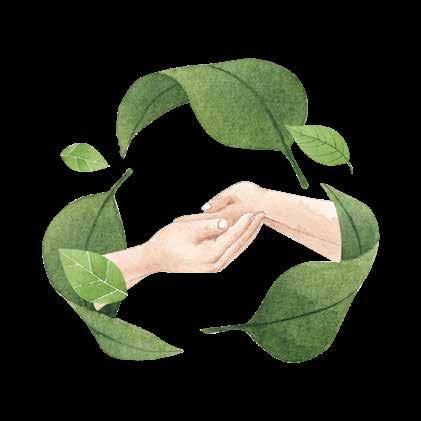

• Responsibility throughout the supply chain and our communities;

• Development and well-being of our employees.
In order to identify the 54 initiatives that fall within the pillars, an assessment was made of the sustainability pressures on our business, along with the priorities and opportunities associated with them, also identifying our current level of oversight with respect to these issues. Timelines, priorities, responsibilities and performance indicators needed to monitor them over time were then defined. The involvement, from the earliest stages, of our main corporate departments ensured that real involvement of the company’s internal stakeholders was guaranteed, both in terms of planning and responsibility for implementing initiatives.
Ensure business growth as well as social and environmental sustainability, a fundamental step in the path undertaken by our company.
31 Chapter 1 Latteria Montello: a family history of over 70 years. 1.7 LATTERIA MONTELLO’S COMMITMENT TO SUSTAINABLE DEVELOPMENT Sustainability pillars Areas of commitment Initiatives 4 12 54 SDGs 7
Our Plan aims to contribute to the achievement of the Sustainable Development Goals, or SDGs, of the UN 2030 Agenda.

Subsequently, the Plan was submitted to and approved by Latteria Montello’s Board of Directors, which analysed its contents and consistency with the corporate strategy. We have set ourselves the goal of updating our Plan annually, in order to take stock of the status of project implementation and to set new goals with a view to constant improvement, with the understanding that sustainability is not an end point, but an ongoing journey. In addition, our Plan aims to contribute to the achievement of the Sustainable Development Goals, or SDGs, of the UN 2030 Agenda . This framework, devised by the United Nations, was used as a strategic driver for the development of the Sustainability Plan in order to provide a clear, transparent and easily interpreted communication framework for our strategy. Of the 17 SDGs identified by the United Nations, Latteria Montello, directly or through the organisations with which it collaborates, contributes to the achievement of 7 goals , specifically:
SDG 3 – Good health and well-being
SDG 5 – Gender equality
SDG 7 – Affordable and clean energy
SDG 8 – Decent work and economic growth
SDG 12 – Responsible consumption and production
SDG 13 – Climate action

SGD 17 – Partnership for the Goals
Goal 3 Ensure healthy lives and promote wellbeing for all at all ages
Goal 5 Achieve gender equality and empower all women and girls
Goal 7: Ensure access to affordable, reliable, sustainable and modern energy for all
Goal 8: Promote sustained, inclusive and sustainable economic growth, full and productive employment and decent work for all
Goal 12: Ensure sustainable consumption and production patterns
Goal 13: Take urgent action to combat climate change and its impacts
Goal 17: Strengthen the means of implementation and revitalise the Global Partnership for Sustainable Development
33 Chapter 1 Latteria
a
history of over 70
Montello:
family
years.
SOME OF OUR INITIATIVES
Quality and transparency
• Drafting a structured marketing and communication policy: we have always adopted clear and transparent communication, which is why we have decided to make a commitment to draw up guidelines and goals to regulate social tools and, more generally, tools associated with our communications.
Our commitment to the environment
• Reduction targets for packaging materials: in line with our commitment, we have decided to set reduction targets for our packaging so that we can coordinate our path towards a continually reduced impact.
Responsibility throughout the supply chain and our communities
• Developing of a collection system for sustainability information from suppliers: we want to be transparent along our entire value chain. We will therefore introduce a system to collect and trace sustainability information on raw material suppliers, such as sustainability practices adopted by the supplier and the certifications that it has.
Responsibility throughout the supply chain and our communities
• Climate survey: we believe in a peaceful working environment that is able to value and recognise the value of each person. We have therefore decided to conduct a business climate survey.

In addition to the Plan’s pillars, we are engaged in creating sustainability governance within the company to guide and monitor performance related to the implementation of Plan initiatives.
PILLARS & SDGs
1. Quality and transparency
SPECIFIC AREAS OF ENGAGEMENT
• Healthy food for all
Ensure high quality standards, offering recipes that are ever more attentive to modern dietary needs.
• Customer satisfaction and safety
Strive every day to ensure that customer satisfaction is continually improved.
• Complete and transparent communication



Promote transparent communication that informs in a clear and responsible manner.
2. Our commitment to the environment
• Circular economy and sustainable packaging

Develop a system that fosters the transition to a circular economy model.
• Logistics and mobility
Reduce supply chain-related impacts and promote sustainable mobility.
• Energy efficiency

Support a process that can improve our energy performance and reduce consumption and the impact of our products.
3. Responsibility throughout the supply chain and our communities
• Responsible sourcing
Pay the utmost attention to material procurement practices, including more and more social and environmental aspects in the evaluation criteria.
• Focus on the local area
Actively safeguard and promote the communities and environment that the company works within.
4. Employee development and well-being
• Health and safety of workers
Ensure that our employees have a safe and healthy working environment every day.
• Well-being of workers
Build a stimulating environment where the mental and physical health of workers is at the centre.
• Diversity and equal opportunities
Create working conditions that promote diversity and inclusion of all people.
• Training and education
Provide growth paths for our employees that enable them to realise their full potential.
35 Chapter 1 Latteria Montello: a family history of over 70 years.
Quality and transparency.








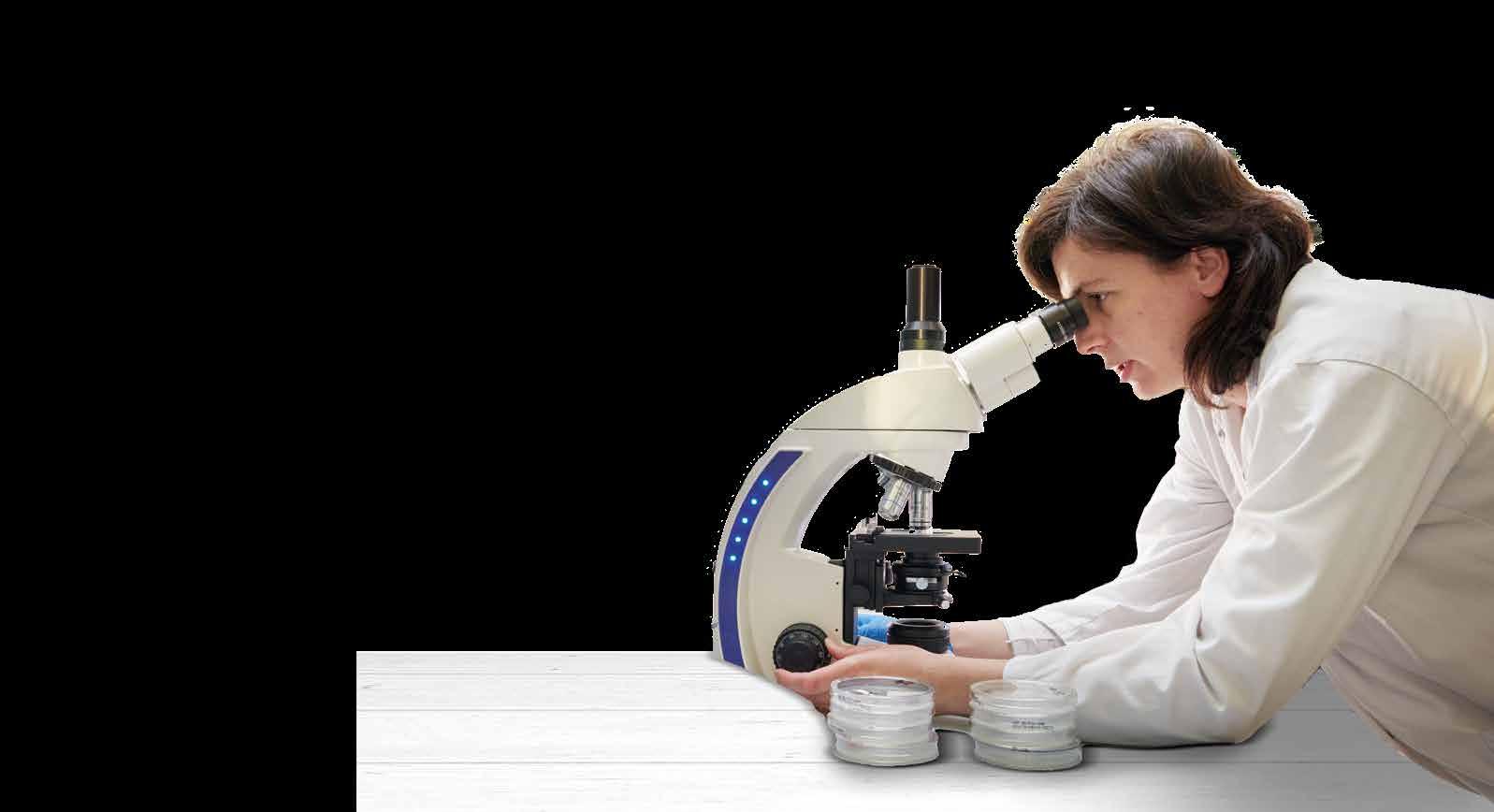




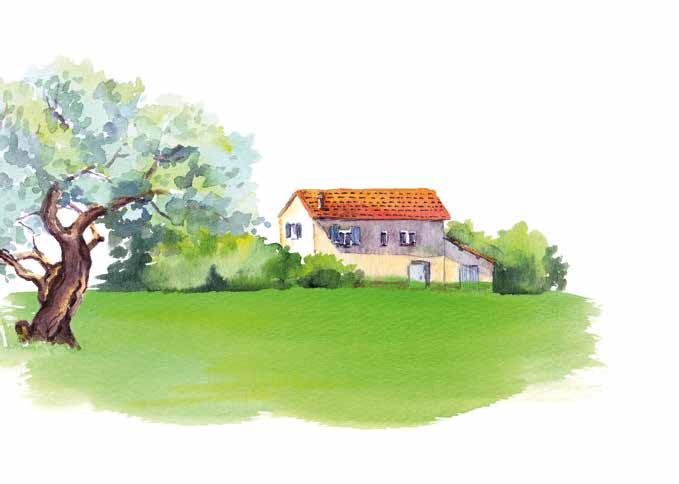



2 chapter
OUR COMMITMENT THROUGHOUT THE SUPPLY CHAIN
92% Italian suppliers

Latteria Montello has always been committed to creating stable and constructive relationships with its suppliers, geared towards sharing goals and paths of environmental and social awareness. In carrying out our activities, the company can rely on a solid structure of suppliers with whom it has established a lasting relationship that has been cultivated and maintained, in some cases, since the beginning of our company history


In order to maintain the high quality that sets our products apart, we carefully select our suppliers, taking into account quality and food safety requirements as well as, as a matter of course, compliance with contractual and supply clauses. As stated in our Code of Ethics, the selection of suppliers and purchase of goods are underpinned by assessments with objective and transparent parameters on professionalism, competitiveness, quality, fairness, reputation, skills and price, carried out by the relevant corporate departments, and we carry out routine monitoring of performance and maintenance of qualification requirements. In addition, purchasing processes are based on pre-contractual and contractual practices of mutual fairness, transparency and cooperation, and are shaped by the pursuit of maximum value for our customers, as well as granting equal opportunities for each supplier.

39 Chapter 2 Quality and transparency.
2.1
In the event that the supplier adopts behaviour during the course of its activities that is not in line with the principles of the Code of Ethics, we are committed to taking appropriate measures, which may go as far as to preclude any and future opportunities for cooperation.
Therefore, in order to verify the strength of the supply chain to establish long-lasting cooperation paths and maintain high standards of product quality, we reserve the right to require our suppliers to meet the following requirements:
• guarantees and evidence of adoption of established food safety, quality and production practices (good manufacturing practice);

• suitably documented availability of means , including financial means;




• organisational structures, design capabilities and resources, know-how, in keeping with the good or service required from the supplier.
A manifestation of our desire to maintain the value and potential of our local area is our commitment to prioritising local supply chains . In 2022, 92% of our supply chain was represented by Italian suppliers, 35% of whom were local suppliers operating within the Veneto Region. Over the two-year reporting period 2021-2022, the composition of the supply chain did not see any significant changes, counting on a robust structure of longstanding suppliers who are committed to disseminating efficient, innovative and sustainable practices.
41 Chapter 2 Quality and transparency.
OF OUR
FOR VALUE CREATION Existence and implementation of appropriate quality systems Documented availability of means, including financial means Organisational structures, project capabilities and resources, know-how Proportion of expenditure to local suppliers (2022) 57.4% Other Italian regions
Veneto
7.4% Inter-company 0.3% EU
THE SOUNDNESS REQUIRED
SUPPLIERS AS A BASIS
35.0%
Region
2.2 GUARANTEEING THE PRODUCT AND THE HEALTH OF CONSUMERS

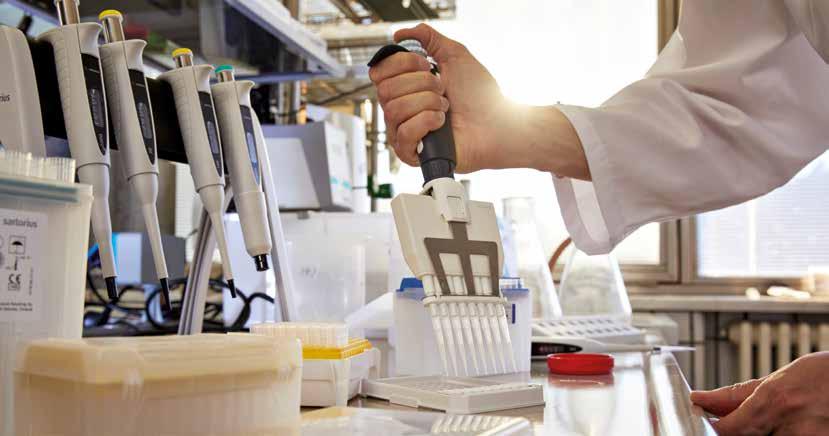
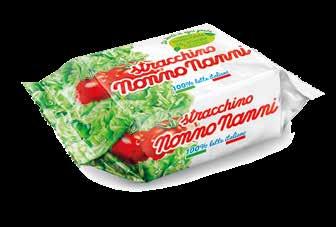


We have always supervised the entire production cycle, from raw materials to product distribution, ensuring timely, comprehensive and efficient service.

Latteria Montello brings good and safe products to the tables of consumers. With the quality of yesteryear, the love of today and a contemporary touch, our production activity embodies the perfect combination of the art of cheese-making and advanced technology made with skill and respect for authenticity and flavour. In order to ensure the highest quality standards for consumers, we strive to be active on several fronts: optimisation and control of existing production processes; continuous improvement with a view to safety, quality and traceability of products offered on the market; and research and development into products and recipes to meet the ever-changing needs of consumers with the best solutions.
We have always supervised the entire production cycle, from raw materials to product distribution, ensuring timely, comprehensive and efficient service. And it is thanks to this whole process that we can guarantee consumers fresh and preserved products in all their goodness.
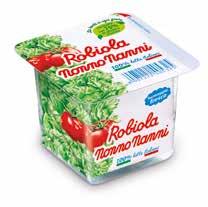
THE COMPANY’S HISTORICAL PRODUCTS
Latteria Montello brings quality and goodness to the table with fresh, authentic-tasting products born out of a passion for the traditional art of cheese-making. We are constantly researching and developing new products that can meet everyone’s different dietary needs: a prime example of this are the Light and LactoseFree products in the Nonno Nanni range
43 Chapter 2 Quality and transparency.
Nonno Nanni Stracchino is a fresh, preservativefree cheese, still made following the teachings of traditional artisanal cheese-making. Its distinctiveness comes from the careful selection of good milk and live milk enzymes (over 2 billion per gram), matured under optimal conditions.
Nonno Nanni Squaquerello is one of the most popular cheeses in the Nonno Nanni family, known for its sweet, enveloping taste and its extreme softness and creaminess. It is a fresh, preservative-free cheese with more than 2 billion live milk enzymes per gram.
Nonno Nanni Robiola is a fresh cheese with a soft, creamy texture and a pleasant, intense flavour. It is easy to spread, making it an ideal cheese to start or finish meals in a tasty way.
THE ART OF CHEESE-MAKING AND INNOVATION: THE STAGES OF OUR PRODUCTION PROCESS
The uniqueness of our cheeses is the result of a careful and painstaking process at every stage : the company scrupulously selects raw materials and has established a direct relationship over the years with the farmers in its local area. After the milk is rigorously tested, it goes through the pasteurisation process and the use of carefully selected milk enzymes, which in Stracchino can reach over 2 billion per gram. Pasteurisation, a critical control point, is periodically checked to ensure the plants are functioning correctly. As proven by the thorough controls that are carried out on our products, no incidents of noncompliance relating to health and safety impacts and services were detected in the two-year period 2021-2022. Production continues with the product processing, which is performed using the age-old method, entrusted to the skills of our cheesemakers. The production is planned and developed by them, adapted according to seasonal factors and in accordance with natural rhythms, using technologically advanced equipment. The result is a quality that respects the tradition of the past and guarantees products that are always good and have a unique taste. The finished product then undergoes numerous quality and safety checks throughout the year to ensure fresh, genuine cheeses with unmistakable goodness.
2 billion milk enzymes present in each gram of stracchino cheese



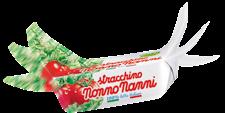



60,000 annual quality and safety checks on our products




















45 Chapter 2 Quality and transparency. Transport
A quality that respects the tradition of the past and guarantees products that are always good and have a unique taste.
Filtration of milk
Over
Production
Portioning and packaging
Pasteurisation of milk
Boxing and storage
Receipt of milk
Check for foreign bodies
We are aware of the environmental aspects related to our production process, which is why we are equipped with a UNI EN ISO 14001 certified environmental system.
PRODUCT, FACTORY AND PROCESS CERTIFICATIONS

We are committed to operating in full compliance with general health and safety regulations ensuring product quality, safety and legitimacy. Through the corporate policy we have adopted, our aim is to manufacture our products in compliance with applicable health and safety and environmental regulations. For us, building a sustainable food production system also means being able to ensure the highest standards of health and safety for our employees, working daily to ensure that our efforts are realised in full compliance with regulations. We are aware of the environmental aspects related to our production process, which is why we are equipped with a UNI EN ISO 14001 certified environmental system. The UNI EN ISO 14001 certification is a voluntary international standard applicable to any type of public or private organisation. The standard specifies the requirements
that a corporate system must have in order for it to achieve mandatory environmental compliance, environmental protection and improvement in the consumption and use of energy and resources.
At the company level, in addition to using a tried and tested Quality Management System that includes all the procedures that govern both the Operational and Administrative business activities, we apply a HACCP self-control plan that consists of the following steps:
• describing and continuously updating the process and related flowchart of the production process;
• assessing the risk associated with raw materials and finished product by identifying critical process or product points in order to identify actions or implement monitoring and records to ensure food safety;
• periodically re-evaluating the system.

47 Chapter 2 Quality and transparency.
To achieve the objectives of the Food Safety Policy expressed by the company management, we then prepared a Self-control Manual: the basic document of the Food Safety Management System, describing the processes, organisational correlations and responsibilities of the personnel concerned. This document provides the operational details in accordance with current regulations, contains information about the factory, production process and products, and includes the risk analysis and the definition of the Critical Control Points. To guarantee the quality of the products and consumer safety, strict controls are in place on raw materials and finished products, assigned to line staff and the Quality Assurance and Control department.
As evidence of our ongoing commitment, we have accordingly adhered to the following voluntary certifications over the years:
Latteria Montello is equipped with a UNI EN ISO 14001 certified environmental system.





In the area of occupational health and safety, we have adopted the UNI ISO 45001 standard.



We have used the Carbon Footprint certification to validate the calculations made on our carbon footprint – the amount of CO₂ generated over the production chain, for the “Nonno Nanni” branded family of stracchino cheeses.
The International Food Standard is an international standard for assessing the conformity of products and processes in relation to food safety and quality.
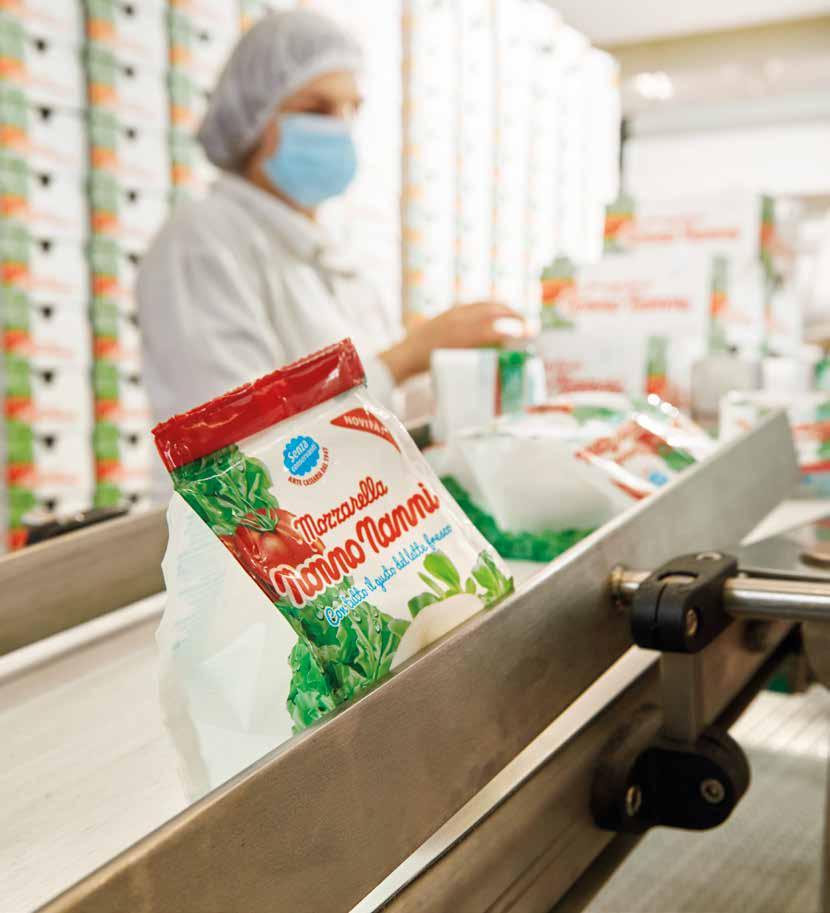
The product certification that guarantees constant control of chemical, physical and bacteriological parameters at all stages of the production process of soft, fresh and pasta filata cheeses, and pasta filata cheeses processed with cream and ricotta.
The BRC standard aims to ensure the safety, integrity, legitimacy and quality of products and related operational controls in the production, processing and packing industry for food and ingredients. It is a standard required by major retailers in Anglo-Saxon countries to ensure the reliability of manufacturers and products from foreign suppliers, for whom other forms of control would be difficult and costly.

49 Chapter 2 Quality and transparency.
2.3
COMPLETE AND TRANSPARENT COMMUNICATION
The label is the tool through which we transparently communicate our commitment to accompany the consumer in a complete and informed choice.
Alongside the guarantee of a high-quality product, we promote the development of responsible communication which can provide our customers with the right information on the label, not only to be in compliance with regulations, but also to promote conscious consumption choices and to provide clear and transparent nutritional information . Consumer health is one of our top priorities, and we are committed to communicating all useful product information through clear, transparent and comprehensive labelling.

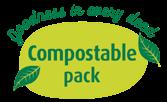
In compliance with the regulations in force, the packaging of Nonno Nanni brand products provides detailed information on traceability, the origin of raw materials, nutritional values and ingredients, especially as regards allergens. The label is the tool through which we transparently communicate our commitment to accompany the consumer in a complete and informed choice. As testament to this, no cases of non-compliance with regulations and/or self-regulatory codes were found with regard to communications concerning the company’s products in the two-year period 2021-2022 .
WE COMMUNICATE WHAT WE ARE
With consumers who are increasingly sensitive and alert to issues related to environmental and social sustainability, we carefully study the claims of our products, with the intent of conveying our commitment to the environment to consumers. As evidence of this, we have placed logos on Nonno Nanni brand products to highlight our best practices applied to each product in terms of packaging materials and actions aimed at offsetting CO 2 emissions. We did not create just one logo, but multiple logos according to the specific characteristics of each product, once again demonstrating our firm commitment to a sensitive issue that is close to our hearts.

Some examples of logos applied to Nonno Nanni products:
We have placed logos on Nonno Nanni brand products.
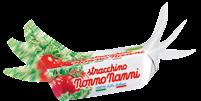
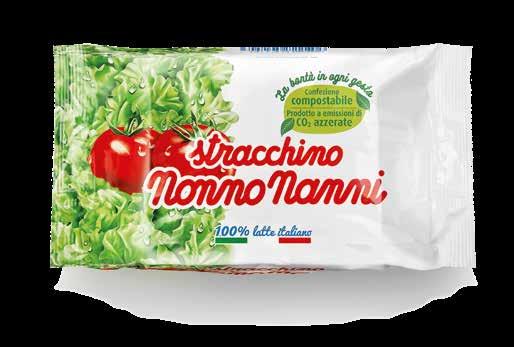
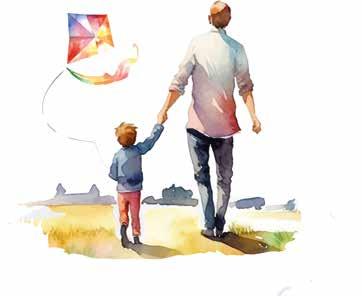
51 Chapter 2 Quality and transparency.
Our commitment to the environment
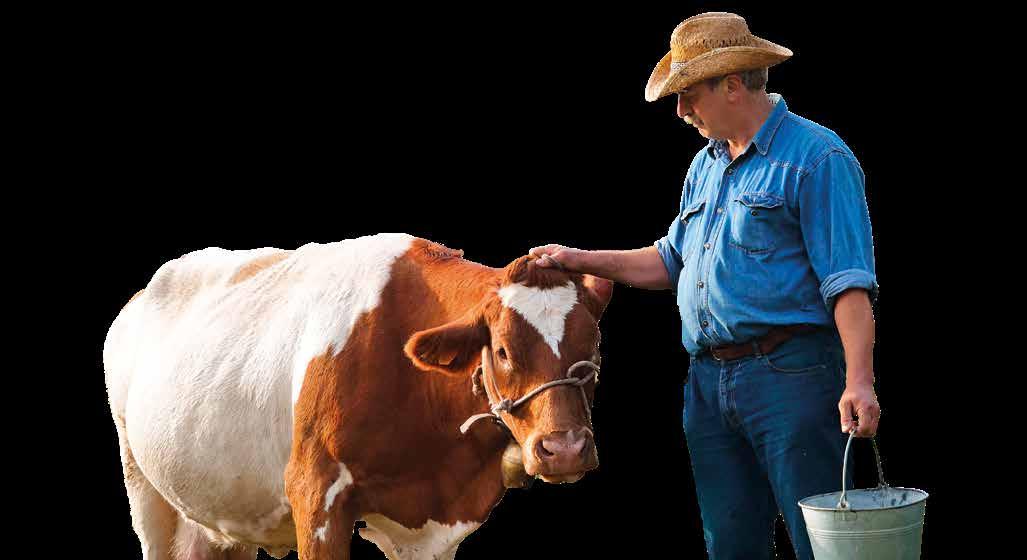













chapter
3
3.1 OUR RESPONSIBILITY
100% purchase of electricity from renewable sources
3.2
MATERIALS AND PACKAGING

Sustainability is not just an opportunity, but a real mission for Latteria Montello. “Goodness in every deed ”, in our opinion, means not just bringing delicious, high-quality products to the table, but also being able to contribute through concrete actions to people’s well-being and to safeguarding the planet, to leave future generations a better, more sustainable and fairer world. With this in mind, Latteria Montello works towards continuous improvement of its environmental management system, through research into processes and technologies designed to reduce its impact.
281,466
tCO2 covered by offsetting activities from 2013 to 2021
93,286



kWh produced by our photovoltaic system in 2022
Our commitment to a path of sustainability is manifested through the conduct of both internal and external control audits aimed at verifying compliance with all the rules that shape the company’s organization, as well as any points of improvement identified. The processes for setting goals and planning activities take into account the priorities that have been identified, and their approval and dissemination are always performed with the consent and support of the entire Management team. Specifically, in the environmental sphere, the UNI EN ISO 14001 standard has been adopted; moreover, the Environmental Management System has been harmonised and streamlined, also thanks to the identification of good practices to be disseminated among employees.
Both at the institutional level and among consumers, attention to the environmental impact and safety of food products is steadily increasing. As a company, we want to position ourselves as innovators and contribute to finding cutting-edge solutions in line with the industry best practices. This is why, through the collaboration of several corporate departments, we have long been committed to analysing and testing the most innovative packaging solutions.
In terms of materials purchased, in 2022 paper was the most common packaging with 814 tonnes, approximately 90% of which originated from recycled sources . Regarding the plastic used for packaging our products, we recorded an increase between 2021 and 2022 of 4.8%, mainly due to the increase in the volume of cheeses produced.
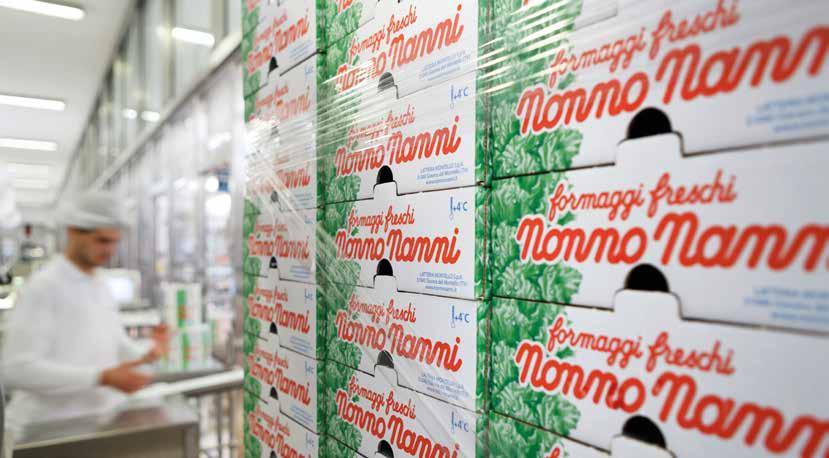
55 Chapter 3 Our commitment to the environment.
As a company, we want to position ourselves as innovators and contribute to finding cutting-edge solutions in line with the industry best practices.
The same two-year period 2021-2022 saw an increase in bioplastics produced using renewable polymers (+11%). The table below shows the quantities of packaging material purchased in the two-year period 2021-2022.
above all, packaging has always been a distinctive feature of our corporate identity and an element which we have always given special attention to in terms of research and development – always giving priority to very high quality packaging which can keep all the properties of our products intact. For this same reason, in recent years we have increased our initiatives and research relating to the sustainability performance of packaging, as part of a strategy to continuously improve our specific environmental performance for each type of material and product, taking care to select packaging that is increasingly recyclable. Indeed, our packaging is being continuously improved and developed in consultation with our various business areas, particularly with the involvement of the Operations Department and the Laboratory. After all, packaging is what allows us to safeguard the integrity of the product, in terms of food safety as well as freshness and taste. Creating new, lower-impact packaging has therefore always been a delicate challenge.
Our packaging is being continuously improved and developed.
Consumers become increasingly aware of the impact of their purchasing choices. Although we have many more communication channels in recent years, packaging will always play a primary role in customer communication.
Not least by virtue of the typical qualities of our products, freshness
To communicate our major innovations in packaging systems in the best way possible, we have developed a clear labelling system that can tell the story of our packaging efforts and provide information on the type of material – whether it’s from recycled plastic and whether it’s recyclable – or indicating how it was possible to achieve reductions in the amount of plastic used to produce the packaging, or offset the CO2 emissions created when producing the product.

57 Chapter 3 Our commitment to the environment.
UoM 2021 2022 Paper t 816 814 Plastic t 570 598 Paper and plastic composites t 24 18 Bioplastic t 44 50 Paper, plastic and aluminium composites t 27 25 Aluminium t 52 58 Wood t 0.3 0.3 Total packaging t 1,534 1,564
The success of the Nonno Nanni Stracchino 100 g packs launched in 2019 and made of 100% biodegradable and compostable material was an important milestone in the use of alternative materials. In 2022 we also introduced compostable packaging for Stracchino with Live Yoghurt Cultures 100 g, Stracchino with Probiotic Ferments 100 g, and Fior di Stracchino 165 g. For these product lines, research and innovation were actually aimed at developing packaging made mostly of residues from the processing of agricultural products and other renewable resources. This means that once the product is consumed, the packaging can be disposed of in the organic waste bin along with the food waste. After that, once it has been processed by composting plants, the material will be turned into compost to fertilise the land.


3.3 ENERGY CONSUMPTION AND EMISSIONS
Mindful that market leadership carries with it a sense of responsibility, we have decided to innovate our plants through efficient solutions, improving the management of our energy requirements. In 2022, the energy consumed by our factory was 174,555 GJ. This consumed energy can be divided into two macro-families: the first relating to the use of fuels, and the second determined by the need for electricity purchased externally. In the first case, the main source is natural gas. The analysis of the energy carriers used in our factory shows that there has been a decrease in natural gas consumption of about 19%. In addition, we have a biogas plant from which we utilised 37,778 GJ of energy in 2022.
37,778 GJ

59 Chapter 3 Our commitment to the environment.
Energy utilised from our biogas plant
THE FIRST RANGE OF STRACCHINO IN COMPOSTABLE PACKAGING
UoM 2021 2022 Natural gas GJ 136,960 114,908 Biogas from anaerobic digester GJ 13,904 37,778 Electricity GJ 11,390 15,385 Diesel GJ 3,291 6,484 Total energy consumed GJ 165,546 174,555
Measuring and monitoring energy consumption is a key element for increasingly conscious use of energy. An Energy Efficiency Plan is regularly defined through an integrated approach that follows three main stages:
• Energy assessment , which examines the energy system of our factories, including every significant aspect of them to explore the potential for reducing consumption and repairing any faults;





• Monitoring and verification , which analyses the impact of efficiency measures on performance indicators;


• Efficiency, focused on continuous research and assessment of the best technologies available on the market.

61 Chapter 3 Our commitment to the environment. Energy consumption by source 2022 22% Biogas from digester 66% Natural gas 4% Diesel 9% Electricity
The European dairy sector is one of the world’s leading economic sectors, both in terms of imports and exports.

Below, we have chosen to highlight some of our major energy efficiency projects carried out over the years:
• A 50 kW photovoltaic system operating on the roof of our Giavera factory.
• A biogas plant at our factory that uses production residues from the processes of turning whey into ricotta, furthering an economic model based on circular economy principles.
• A natural gas-fuelled cogeneration plant at our factory to improve energy efficiency. The cogenerator also allows some of the thermal energy from its process to be recovered by using it in production processes and thermal utilities.
• Our commitment to using clean energy sources is proven by the fact that 100% of the electricity purchased from the grid since 2001 has come from renewable sources, as declared on our products.
The operational, environmental and economic impacts of energy are key issues for our company.
The European dairy sector is one of the world’s leading economic sectors, both in terms of imports and exports. However, when analysing the environmental impact of the supply chain, it should not be underestimated that the production sector is responsible for generating a significant amount of emissions released into the atmosphere. For this reason, in line with our Sustainability Plan, we have decided to commit to a decarbonisation strategy by expanding supplies from renewable energy sources and taking energy-efficient actions in production processes to reduce our energy requirements.
In line with the provisions of the GHG Protocol, we have committed to reporting:
• Direct emissions (Scope 1) : the direct GHG emissions from assets owned by Latteria Montello or that we control operationally.
• Indirect emissions from electricity consumption (Scope 2): calculated using the Location-Based approach4
The table shows Latteria Montello’s emissions, expressed in tCO2e, for the years 2021 and 2022.
63 Chapter 3 Our commitment to the environment.
UoM 2021 2022 Diesel tCO2e 230 462 Natural gas tCO2e 7,736 6,455 F-gas tCO2e 233 42 Total Scope 1 GHG emissions tCO2e 8,199 6,959 Electricity purchased from the grid tCO2e 997 1,346 Total Scope 1+2 emissions Location-Based tCO2e 9,196 8,305
4 The Location-Based approach includes indirect emissions from purchased or acquired electricity generation, calculated by applying national average emission factors for different countries. Please refer to this report’s Note on Methodology for more detail about the approach. The 100% coverage by Certificates of Guarantee of Origin for the electricity we purchase does not require the use of the Market-based approach for calculating Scope 2 emissions.
8,305

A total of 8,305 tCO₂eq (Scope 1 + Scope 2 Location-Based) were emitted in 2022, of which 84% were due to direct emissions of 6,959 tCO₂eq (Scope 1). Indirect (Scope 2) emissions therefore represented 16% of emissions. Overall, CO₂ emissions decreased by 18% between 2021 and 2022. In terms of other significant emissions released into the atmosphere, in the case of Latteria Montello they mainly consist of nitrogen oxides (NOx) and sulphur oxides (SOx) mainly associated with boilers, and our cogeneration plant5
3.4
WATER RESOURCE MANAGEMENT IN THE PRODUCTION PROCESS

CARBON NEUTRAL NONNO NANNI STRACCHINO
We have decided to take concrete action to reduce our environmental impact by offsetting part of the emissions produced from 2014 to date, committing to offset a total of 281,466 tonnes of CO2eq, which is equivalent to the CO2eq emissions of a car travelling 1.2 billion kilometres.
In 2022 we offset the direct and indirect CO2 emissions associated with the production of all the Nonno Nanni stracchino cheeses produced at the Giavera del Montello factory, making them carbon neutral.
We work to constantly monitor water use within our production lines, in the use of technical services, and pay special attention regarding the washing and sanitising of our facilities. Although dairy practices involve the natural use of water within production processes, we are at the forefront of reducing water waste to a minimum by applying state-of-the-art technologies such as CIP washing systems, which ensure optimal utilisation of recirculated cleaning liquids and rinsing solutions. This type of system allows us to use water to the extent strictly necessary, avoiding waste. In 2022, 406,680 cubic metres of water were withdrawn. All withdrawals were from fresh water, with total dissolved solids of less than 1 gram/litre. The coexistence between an industrial factory and the surrounding areas is often a source of conflict, making sound management of environmental factors essential. Our company obtains its water supply from areas under medium to high water stress and the water is mainly withdrawn from groundwater wells. After being used by the processes, checked to ensure its parameters comply with legal standards, and undergoing any necessary purification treatment, the water is returned.

65 Chapter 3 Our commitment to the environment.
5
The figure for indicator 305-7 was obtained by a proportional estimate of gas consumption and chimney capacity multiplied by the hours of operation.
tCO2eq Scope 1 + Scope 2 Location-based UoM 2021 2022 NOx t 16.1 13.7 SOx t 0.6 16.3 Total other emissions t 16.7 30.0
3.5 WASTE MANAGEMENT

99.6%

Management of waste production and its proper disposal is conducted throughout the processing cycle and is carried out in accordance with current regulations and the guidelines set by the Environmental Management System. In 2022, the total amount of waste produced by the factory was 2,486 tonnes, up from 2021 mainly due to the increased use of the biogas plant, which produces a new type of waste to be managed. Almost all of the waste is non-hazardous waste (99.6%).
As shown in the table, out of the waste produced, the majority is sludge from the process of purifying effluents from production Waste recovery represents a very current challenge among organisations operating in the sector. In view of the circular economy, the company uses part of the sludge for agricultural spreading.
67 Chapter 3 Our commitment to the environment.
Type of waste UoM 2021 2022 Sludge from on-site effluent treatment t 1,090 1,110 Digestate produced from processing animal or plant waste t - 599 Unusable waste from brine t 371 354 Iron and steel t 50 107 Mixed material packaging t 128 129 Paper and cardboard packaging t 88 109 Plastic packaging t 34 47 Other waste t 60 32 Total t 1,822 2,486
Almost all of the waste is non-hazardous waste

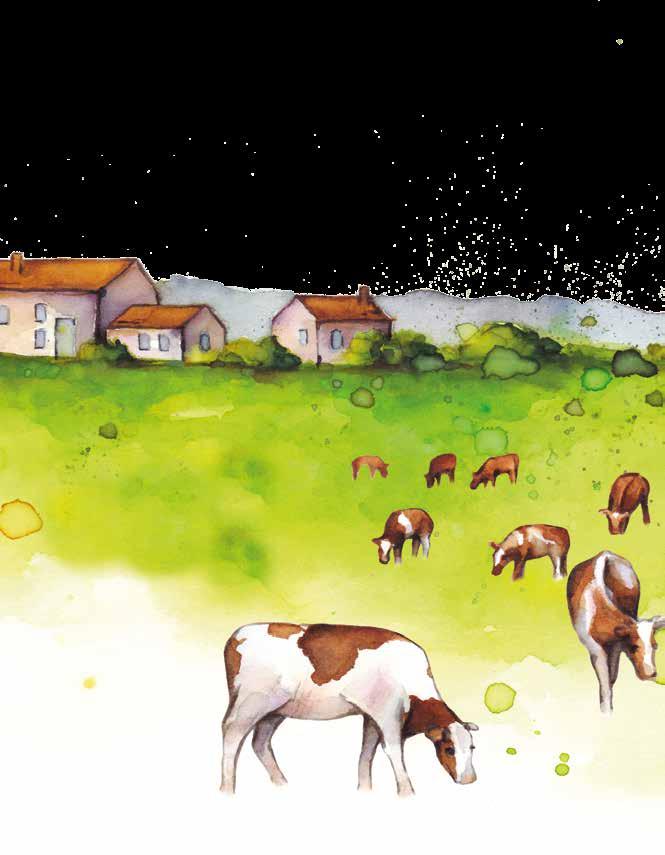









chapter 4
The importance of our people.
4.1



PEOPLE AT THE CORE
86% permanent contracts
Latteria Montello’s story is not only one of tradition, innovation and success, but also of people. People who work hard every day to make the highest quality products that reach the tables of our consumers.
50% under-30 hirings
And indeed, the wealth of knowledge and skills handed down by our staff is what creates the unique and advantageous position that our company enjoys. It is thanks to the work and passion demonstrated over the years by our people that Latteria Montello is one of the leaders in the Italian dairy market today. We recognise the central importance of our people, not only from a professional point of view, but also and above all from a human point of view. This is why we work to attract and contribute to the growth of the best talents, who stand out for their commitment and alignment with the company values. As at 31/12/2022, our workforce comprised 307 employees in Italy, of whom 59% men and 41% women.
1,860 hours of training
The creation of a strong sense of belonging is also reflected in the stability of the working relationship we establish with our employees. In fact, in 2022, 86% of them were employed on permanent contracts, with temporary contracts accounting for 14%. Stability is something we value, and in 2022, the percentage of full-time employees accounted for 93% of the workforce. During 2022, 100% of our employees were covered by the National Collective Labour Agreement (CCNL) – Food Industry sector.
As shown within the chart below illustrating employees by employment category, as of 31/12/2022 manual workers were the largest category, making up 68% of the company population. In contrast, office workers were the second largest category, at 24%, followed by managers, at 7%. In quantitative terms, all categories increased in number as a result of the increase in employees from 2021 (296) to 2022 (307).
71 Chapter 4 The importance of our people.
Office
1% Executives 2021 Women Men 2022 122 126 174 181
Employees by employment category 2022
Total employees 2021 vs 2022 68% Manual workers 24%
workers 7% Manager
Our people are a key factor in ensuring competitiveness and company balance. We believe that diversity is a source of enrichment, which is why we want to support gender equality and empowerment of women , with the knowledge that we operate in a sector historically represented by a heavily maledominated workforce. Gender equality is not only a fundamental human right, but the necessary condition for a prosperous and sustainable working environment. We have always set ourselves apart as a family business, and this is one of the reasons why we are keen to support our employees at every stage of their parental leave, including preparation, the entire leave period, and when they return to work, for which we had a 100% return rate in both reporting years.
Among our values, family is certainly one of the most important. For this reason, in order to further support our employees during the period of maternity and paternity leave and enable them to fully experience the precious moments of this period, we give our employees the opportunity to enjoy an additional 6 months of part-time work after maternity leave and the breastfeeding period. The table below shows the details of employees who took parental leave and relevant breaks for the 2021-2022 two-year period.

73 Chapter 4 The importance of our people.
2021 2022 Number of employees who were entitled to parental leave in the relevant year 296 307 Number of employees with the right to maternity leave 122 126 Number of employees with the right to paternity leave 174 181 Number of employees who took parental leave in the relevant year 2 7 Number of employees who took maternity leave 2 7 Number of employees who took paternity leave -Number of employees who returned to work in the relevant period after the end of parental leave 1 3 Number of employees who returned after the end of maternity leave 1 3 Number of employees who returned after the end of paternity leave -Number of employees who returned to work after the end of parental leave and were still employed 12 months after their return to work 1 1 Number of employees still employed 12 months after returning to work after a period of maternity leave 1 1 Number of employees still employed 12 months after returning to work after a period of paternity leave -Total number of employees who were due to return to work after taking parental leave 1 3 Number of employees who were due to return to work after maternity leave 1 3 Number of employees who were due to return to work after paternity leave - -
We believe that diversity is a source of enrichment, which is why we want to support gender equality and empowerment of women.
We have a daily aim to bring together people with different education, experiences and social/cultural backgrounds to enable our company to better meet the challenges of an increasingly competitive and specialised market.
Every new employee, regardless of the type of job they will perform, represents added value, and we therefore believe that the recruitment process should be handled even more carefully. We have adopted a staff search and selection procedure that defines the procedures to be followed and the tools to be used in order to achieve this. This document also has the aim to align the process with the principles and guidelines contained in the company’s Code of Ethics and Organisational Model 231/01. We select and hire personnel on the basis of their work skills and aptitude for the position to be filled, in keeping with the principles and values set out in the Code of Ethics. Assessment of the personnel to be hired is based on matching the candidate profiles with the company’s needs, while respecting equal opportunities for all concerned. The Human Resources Department is responsible for implementing and complying with this procedure, and decides on the most appropriate channels for recruitment, such as CV databases, records of vocational schools and universities, advertisements online or in newspapers, or engagements with consultancy firms or recruitment agencies.
The graphs show trends in hiring and termination by gender and age group in the year 2022. The hiring rate was 19%, with 56 new hires, of whom 32 men (57%) and 24 women (43%). In 2022 there were 50 terminations, of whom 28 men (56%) and 22 women (44%). Even in these complex years, we have maintained a positive contribution in terms of attracting younger recruits: in 2022, 50% of new hires were under 30, followed by 43% aged 30-50, and 7% over 50.
Recruitment by age group (2022) 32% < 30 38% 30 ≤ x ≤ 50
Recruitment by gender (2022) 7% > 50 43% 30 ≤ x ≤ 50 43% Women
Termination

Termination 50% < 30 56% Men
by gender (2022) 30% > 50 44% Women
75 Chapter 4 The importance of our people.
In terms of terminations, the 30-50 group accounted for 38% of the total (19 terminations), followed by the under-30 group with 32% (16 terminations) and the over-50 age group with 30% (15 terminations). 57% Men
by age group (2022)
56 new hires in 2022
>90% Welfare plan participation rate
WELFARE E BENEFIT






The excellence of Latteria Montello’s products results from the skill of the people who work at our factory every day. To thank and show our deep appreciation to all our staff, over the years we have always invested in a number of welfare and benefit initiatives. The welfare plan has always had a high participation rate (over 90%), making various options available to our employees, such as being able to obtain a sum of money to put towards various services. These include reimbursement for educational expenses for family members, a health fund for reimbursement of medical expenses, reimbursement of welfare expenses for family members in need, as well as shopping vouchers, food vouchers for supermarket shopping and fuel.
4.2



HEALTH AND SAFETY OF WORKERS






Our health and safety goals are defined for each department, taking account of the significant occupational safety aspects, the associated compliance obligations and the factors arising from risk assessment. These goals are developed in a manner consistent with corporate policy, monitored periodically and communicated to ensure there is a continuous process of improvement. With the goal of aligning internal practices, procedures and systems, we embarked on a journey that has led us to achieving the UNI ISO 45001 certification.
Latteria Montello is engaged on a daily basis to promote a culture of prevention and ensure the occupational safety of all its employees. Disseminating a culture of safety, individual responsibility and creating awareness of risks are central to continuing to provide a safe working environment. This is why we have specialist personnel within our workforce who are responsible for ensuring that the working environment complies with current regulations, defining guidelines, coordinating monitoring activities and, where necessary, improving safety conditions, supervising activities and interfacing with departmental managers.
77 Chapter 4 The importance of our people.
Education Health Baby-sitting Recreation and sport
Latteria Montello is engaged on a daily basis to promote a culture of prevention and ensure the occupational safety of all its employees.
Although our operations, including tasks directly related to producing our cheeses, do not constitute high-risk activities, we consider the protection of people to be an indispensable condition in everything we do, including tasks of a commercial nature. In fact, our sales staff are exposed to road hazards on a daily basis while travelling around Italy. For this reason, through the health and safety department, we wished to develop a safe driving manual for our sales staff in order to improve perception in hazardous situations and prevent road hazards, to take action on accidents on the road.
The table below shows the number of injuries for the two-year period 2021-2022, which saw an increase from 4 to 10. The injury rate was 20 for 2022. There was 1 accident reported on the road for 2022.
Offices and the factory undergo periodic compliance checks through document analysis and workplace inspections and, when deemed necessary, an improvement plan is drawn up. If an accident occurs, the persons in charge investigate how it happened, seeking to trace the causes that led to the accident in order to assess how the internal processes should be adapted. The cooperation of employees is therefore extremely valuable, as they can highlight dangerous situations or provide suggestions for improvement.
With regard to specific training on the subject of health and safety within the company, we take a preventive approach that provides workers with all the necessary information and training on occupational health and safety. Specifically, during 2022 our employees were trained on Health and Safety issues for a total of 1,371 hours. The safety department, in cooperation with the human resources department, has promoted and administered courses to make workers aware of musculoskeletal problems and the critical importance of positions and loading activities performed during work activities, in order to prevent the onset of musculoskeletal disorders in the medium and long term. Courses have also been held to promote good lifestyle habits, particularly in relation to proper nutrition.
We

79 Chapter 4 The importance of our people.
Employees UoM 2021 2022 Total hours worked No. 545,270 543,383 Total number of recordable work-related injuries, including fatalities No. 4 10 Of which accidents on the road No. - 1 Total number of work-related injuries with serious consequences No. - 2 Of which the number of fatalities No. -Rate of recordable work-related injuries - 7 20 Rate of work-related injuries with serious consequences - - 3.7 Rate of fatalities - - -
take a preventive approach that provides workers with all the necessary information and training on occupational health and safety.
4.3 TRAINING AND DEVELOPMENT

Latteria Montello is not only a manufacturing company of excellence, but a workplace where we are committed to ensuring that people feel valued and are given the best opportunities to express their full potential. Within our company, we consider training and developing the skills of our employees as fundamental aspects for achieving our goals and their professional objectives. Conscious of the strategic value of people in our growth and improvement process, we are committed to ensuring that education, training and activities are targeted to each worker according to their role, and designed to achieve, maintain and develop skills that are always relevant and in line with the demands of the competitive environment in which we operate. During 2022, in-house training initiatives and courses were implemented which got our employees involved in a total of 1,860 hours of training.
Special training courses are also offered based on specific needs.
Courses were also introduced to support employees in managing their activities when working remotely, and support for improving IT skills. In addition, the annual training plan includes both internal and external courses, which each department communicates to the Human Resources Department during the budget discussion each year so it can be adapted to requirements and keep our workers competitive within the market. These plans are then implemented and improved over the course of the year as the company’s strategies adapt and evolve.

Chapter 4 The importance of our people.
Gender Women 625 585 Men 1,492 1,275 Employment category 2,117 1,860 Executives 44 136 Managers 505 230 Office workers 427 918 Manual workers 1,141 576
Responsibility to our communities.








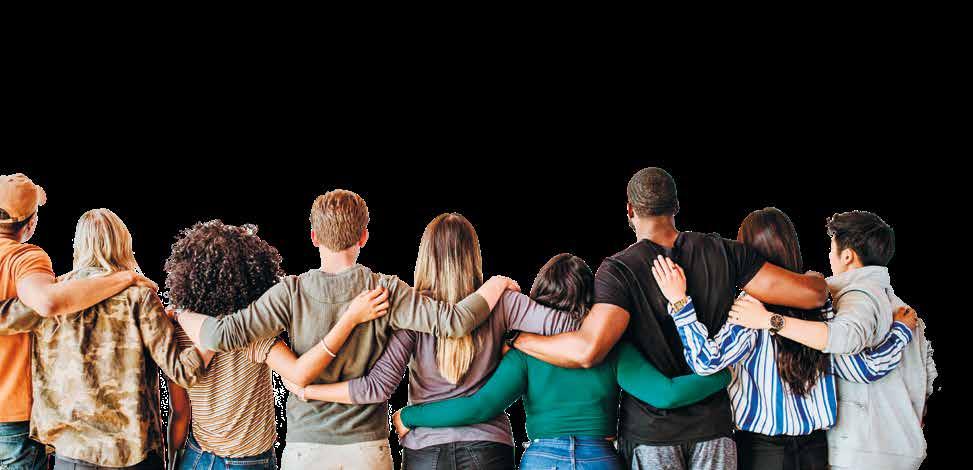








chapter 5
5.1
LATTERIA MONTELLO’S INITIATIVES AND SOCIAL COMMITMENT

€146,576 donated in the two-year period
14 associations supported



The need to ensure the well-being of employees goes hand in hand with the need to actively contribute to the welfare of the community. For this reason, in line with its system of values and responsibilities, Latteria Montello has always contributed to the development of charitable initiatives that benefit society. Through a strategy of caring and concrete care for communities, the company aims to create opportunities for people through a structured process that starts from listening to their needs in order to develop an effective response, consisting of long-term projects in collaboration with local entities. Forming valuable partnerships and networking with all the most important local participants and stakeholders – public and private – is crucial to the success of any project, whether it is an emergency, mediumor long-term commitment, or for the most vulnerable segments of the population. In 2022, the company further consolidated its commitment to the community by supporting more than 10 associations, organisations and charities through cash donations and donations of its products.
17 tonnes of food surplus distributed in 2022
OUR COMMITMENT TO SUPPORT THE MOST VULNERABLE
Latteria Montello runs an extensive programme of activities to involve and support the most vulnerable communities, to create shared value and make a positive impact in the Veneto region and across the country. For many years now, Latteria Montello has demonstrated its solidarity with people suffering from cystic fibrosis by financially supporting and working with the Cystic Fibrosis Research Foundation. Latteria Montello’s approach to charities varies from direct funding of activities to product donations. In terms of sharing its products, Latteria Montello has also collaborated for some time with the “Amici della Solidarietà” (Friends of Solidarity) Voluntary Association, which works to help local communities in need through product donations and redistributing surplus food.
FIGHTING FOOD WASTE
The “Amici della Solidarietà” Voluntary Association was founded in 2006 with the mission to help disadvantaged people – both young people and adults – as well as charities and organisations that assist individuals in a state of destitution or social fragility. Today, the Association has a triple purpose: promoting social solidarity actions and interventions; taking practical actions through the organised use of surplus food and products that can still be used, to create a culture of combating waste through the La Dispensa solidarity emporium; and finally, organising meetings that promote the value of being together according to principles of solidarity and responsible consumption. In 2022, Latteria Montello supported Amici della Solidarietà by donating 17 tonnes of surplus food from its products.
85 Chapter 5 Responsibility to our communities.
Even in the development of its Marketing and Communication activities, the company pays special attention to those most in need, combining its activities wherever possible with charitable initiatives. This is the case for the #Goodness in every deed competition, which was launched in January 2022 for all consumers. Through the initiative, a charity engagement campaign was activated where each time a consumer purchased at least one package of Nonno Nanni stracchino, the SpesaSospesa.org project would be supported – a solidarity initiative to help economically disadvantaged families. In addition, the Instant Win mode meant that participants in the competition had the chance to win a daily €50 shopping card, which was sent directly to the winners’ homes in the form of a prepaid card.
This is a virtuous and sustainable project that, as the chosen name already suggests, expresses the company’s desire to perform a supportive and concrete gesture for the benefit of the community: the project resulted in the distribution of 60,000 meals.
LOCAL INCLUSION AS THE FOUNDATION OF OUR BUSINESS
Awareness of our responsibility towards the local area is expressed through initiatives and activities that foster community support and advocacy, in order to maintain a relationship of cooperation and trust while remaining a point of reference. For this reason, Latteria Montello has been supporting sports and local organisations for many years, while also working with associations in the Treviso area. During 2022, Latteria Montello continued its collaboration with these groups by supporting numerous sporting events through free products and economic contributions.
WE CARE ABOUT THE WELL-BEING OF THE YOUNGEST...

As part of its commitment to the community, the company has always put the needs of children first, as it sees the little ones as something precious, and essential for preserving the sense of tradition and family that has allowed Latteria Montello to get where it is today. As testament to this, in 2021 and 2022 the company supported the “I Bambini delle Fate” Foundation , which is committed to promoting and implementing projects aimed at children with disabilities. It also sponsored the “Biennale del Bambino” (Children’s Biennial) in 2022. As well as supporting them through an economic contribution, Latteria Montello directly involves children by inviting them to the company: for many years now, visits to the factories have been organised to introduce “Nonno” – our grandfather – to the children and tell them all about what is behind the products they eat every day.

87 Chapter 5 Responsibility to our communities.
...AND OLDEST
While we see children as an essential element for carrying on traditions, we also need to consider who is in charge of handing them down: Latteria Montello attaches great importance to the role that older people play in society, believing that they are the custodians of Tradition and of values that are crucial for the development of future generations. With this in mind, every year the company concretely demonstrates its commitment to the elderly through its support of associations such as the Nazionale AUSER Association, which is dedicated to promoting active ageing among the elderly and enhancing their role in society. Grandparents truly are the pillars of today’s families and society. Engaged in supporting activities on a daily basis, there are some 17 million grandparents who take care of their grandchildren through simple but vitally important actions: picking them up from school, preparing meals, accompanying them to various after-school activities, and helping them with their homework. Today more than ever, Latteria Montello must strengthen the role of grandparents , giving them a concrete and central value, and bringing out the potential that only grandparents are able to express.
This is why it has now become a tradition for Latteria Montello to celebrate Grandparents’ Day on 2 October and to thank them for their valuable and essential role within the family The company’s goal is threefold: to highlight the importance of grandparents and elderly people in society; to affirm the social aspect of the initiative, with practical actions for grandparents; and to stimulate interaction and active involvement of people with the Nonno Nanni brand. For Grandparents’ Day 2022, we launched the solidarity initiative “Nonniversario” (“Nonniversary”) a digital campaign where we could let every grandparent know that we cherish the advice and words of wisdom they have shared with us over the years. Through the initiative, we invited anyone who wanted to surprise their grandparents to log on to the “Nonno Nanni Community” to share the quote that they remembered most fondly. The uploaded messages were automatically customised on the platform with graphics especially created by Nonno Nanni, and were then emailed so that participants could download them, send them to their grandparents, or post them on social media with the hashtag #nonniversario. The most beautiful and engaging contents were featured in a video that was published on 2 October on Nonno Nanni’s social media channels. Furthermore, the best content was posted on a social wall within our Community, and some of it was collected by an illustrator, who used it as inspiration for unique drawings that could express all the support and affection that grandparents have been able to impart on us. A simple gesture, but one full of love, with an even deeper meaning just under the surface. For Grandparents’ Day is not only a time of celebration, but also an opportunity to help the loneliest and most vulnerable elderly: for every quote uploaded to the community, Nonno Nanni donated €3 to AUSER, reaching a total donation of approximately €5,000.


89 Chapter 5 Responsibility to our communities.
NOTE ON METHODOLOGY
This document is the first Sustainability Report of Latteria Montello S.p.A. , prepared on a voluntary basis, with the aim of transparently communicating to its stakeholders the company’s commitment to sustainable development and to a model of doing business that respects social, environmental and economic factors.
The Report covers the period from 1 January 2022 to 31 December 2022, which coincides with the time frame of the Statutory Financial Statements. In order to allow the company’s performance to be compared and benchmarked over time, data has also been reported for the 2021 financial year. The document, which will be published annually, has been prepared in line with the requirements of the GRI Sustainability Reporting Standards (hereafter GRI Standards), published by the GRI –Global Reporting Initiative, under the “In Accordance option”. This Sustainability Report 2022 can be viewed and downloaded at www.nonnonanni.it. For clarifications and further information, please send an email to sostenibilita@nonnonanni.it.
The document, which was not subject to external assurance, was approved by the Board of Directors on 27/07/2023.
1. CONTENTS AND SCOPE OF THE REPORT
This Report provides an account of certain GRI Standards, or part of their content, on issues considered relevant in terms of economic, social and environmental impacts for the type of activities and processes conducted by Latteria Montello and for the interest of its stakeholders. The process that led to the preparation of the Sustainability Report 2022 included the involvement of corporate management and the main departments that they coordinate.
To ensure the quality of the information reported, the Report was prepared while following the principles of accuracy, balance, clarity, comparability, completeness, sustainability context, timeliness, and verifiability required by the GRI.
The company conducted a materiality analysis to identify the actual and potential impacts generated on the economy, environment and people. It considered possible human rights violations with regard to negative impacts and assessed the contribution to sustainable development with regard to positive impacts.
In order to assess potentially negative impacts, all company policies, procedures and actions put in place to prevent and mitigate negative effects were considered. Prioritisation allowed the company to choose material topics for reporting. At the methodological level, the main positive and negative impacts were classified and evaluated according to their severity and likelihood to occur.
The scope of information in this Sustainability Report is fully aligned with the reporting scope of the Statutory Financial Statements of Latteria Montello S.p.A., whose production factory and offices are located in Giavera del Montello (Treviso).
91 Note on methodology
2. MAIN CALCULATION CRITERIA
The methodological details on how the social and environmental indicators in this Sustainability Report were calculated are given below.
Energy consumption
The energy consumption of Latteria Montello (diesel, natural gas, biogas from anaerobic digester, electricity) was calculated using gigajoules (GJ) as the unit of measurement. In order to harmonise the various energy carriers, use was made of the conversion factors published in the UK government’s DEFRA (Department for Environment, Food and Rural Affairs) database for the years 2021 and 2022.
Direct emissions (Scope 1) and indirect emissions (Scope 2) Greenhouse gas emissions were calculated in terms of CO2 equivalent, following the guidelines of the GHG Protocol. Latteria Montello includes the following emission categories in this document:
Scope 1 emissions: all direct emissions generated by the company, i.e. those that occur physically within the company perimeter and result, for example, from the use of heating fuels or the use of company vehicles.
• For emissions related to fuels (diesel, natural gas, biogas from anaerobic digester), the emission factors used were those published in DEFRA, Conversion factors – Full set 2021, 2022. Scope 2 emissions: greenhouse gas emissions associated with the generation of electricity purchased for consumption within the organisation. Electricity-related emissions are calculated using two different methodologies:
• Location-Based reflects the average emission intensity of national grids, considering both renewable and non-renewable generation; GHG emissions are calculated using an average emission factor that relates to the national electricity mix: the higher the share of renewables used by a specific country, the lower the relative emission factor.
For the Location-Based approach, the factor used was the one reported in the “International Comparisons” document published by Terna on Enerdata data.
• Market-Based reflects emissions generated from electricity, influenced by the company’s choice to purchase it certified from renewable sources. To be considered renewable, purchased electricity must be covered by contractual instruments such as Guarantees of Origin (GO). The portion of purchased electricity covered by GOs is considered to be zero-emission, while the remainder is multiplied by a factor called “residual mix”, which takes into account the emission intensity of national grids considering only non-renewable generation.
For the Market-Based Approach, the Residual Mixes used were the ones reported in the “European Residual Mixes” document published by the AIB (Association of Issuing Bodies), updated annually.
Considering 100% of the electricity that the company purchases is covered by Guarantee of Origin Certificates, it was not necessary to use the Market-Based approach for calculating Scope 2 emissions, as these are considered to be zero.
Other emissions
Information on significant emissions of nitrogen oxides (NOx) and sulphur oxides (SOx), reported in line with GRI 305-7 – Nitrogen oxides (NOx), sulphur oxides (SOx) and other significant air emissions, was processed by estimating the hours of operation and the fume capacity of existing chimneys, resulting in the annual tonnes of pollutant emissions generated by Latteria Montello’s operations.
Health and safety
The injury frequency index for GRI 403-9 Work-related injuries is calculated as the ratio of the total number of recordable injuries to the number of hours worked by employees during the same period, multiplied by 1,000,000.
93 Note on methodology
GRI CONTENT INDEX
The GRI Content Index is a navigational tool that specifies which GRI disclosures were used in the preparation of this report, which disclosures were reported, and where those disclosures can be found within the document or in other documents. In addition to making the reported information easily traceable, the GRI Content Index ensures that the overall reporting process is transparent and credible.
GRI 1: STATEMENT OF USE
Statement of use Latteria Montello S.p.A. has reported the disclosures included in the GRI Content Index for the reporting period 01/01/2022 – 31/12/2022, using the “In accordance” method.
GRI 1 used GRI 1: Foundation 2021
Relevant GRI industry standards [N/A]
95 GRI content index
GRI standards Disclosure Page number Note Omissions GRI 2: GENERAL DISCLOSURES 2021 The organisation and its reporting practices 2-1 Organisational details 10 2-2 Entities included in the organisation’s sustainability reporting 91 2-3 Reporting period, frequency and contact point 90 2-4 Restatements of information This indicator is not applicable because 2022 is the first year of reporting. 2-5 External assurance 90 Activities and workers 2-6 Activities, value chain and other business relationships 25 2-7 Employees 70 2-8 Workers who are not employees Non-employee workers of Latteria Montello S.p.A. as of 31/12/2022 consisted of 15 temporary workers and 1 self-employed worker. Governance
Governance
Nomination
GRI standards Disclosure Page number Note Omissions
Chair of
highest governance body 16 2-12 Role of
highest governance
in
the management of impacts 16 2-13 Delegation of responsibility for managing impacts 16 2-14 Role of the highest governance body in sustainability reporting 90 2-15 Conflicts of interest 16 2-16 Communication of critical concerns 14
Collective knowledge of the highest
16
Evaluation
Remuneration policies
Process to determine remuneration 16 2-21 Annual total compensation ratio Information not reported
confidentiality reasons. Strategy, policies and practices 2-22 Statement on the sustainable development strategy 2 2-23 Policy commitments 30 2-24 Embedding policy commitments 30 2-25 Processes to remediate negative impacts 14 2-26 Mechanisms for seeking advice and raising concerns 14 2-27 Compliance with laws and regulations
Membership in associations
Stakeholder engagement
Approach to stakeholder engagement 20 2-30 Collective bargaining agreements 70
Process to determine material topics
3-2 List of material topics
2-9
structure and composition 16 2-10
and selection of the highest governance body 16
2-11
the
the
body
overseeing
2-17
governance body
2-18
of the performance of the highest governance body 16 2-19
16 2-20
for
Over the two-year period 2021-2022, there were no cases of non-compliance with laws and regulations in social and economic matters above the significance threshold set at €10,000. 2-28
20
2-29
GRI 3 MATERIAL TOPICS 2021 3-1
24
24
GRI standards Disclosure Page number Note Omissions
MATERIAL TOPICS
ENVIRONMENTAL PERFORMANCE INDICATORS
ENERGY AND EMISSIONS
GRI 302: Energy 2016
302-1 Energy consumption within the organisation 59
WATER RESOURCE MANAGEMENT
GRI 303: Water and effluents 2018
303-3 Water withdrawal 65
MATERIAL AND RESOURCE MANAGEMENT
GRI 301: Materials 2016
301-1 Materials used by weight or volume 55
EFFICIENT WASTE MANAGEMENT
GRI 306: Waste 2020
AIR POLLUTION
GRI 305: Emissions 2016
In light of Latteria Montello’s business, the GRI 301-1 indicator refers only to the amount of packaging material purchased in the two-year period 2021-2022. Due to confidentiality constraints, conforming as strategic business information, the amount of raw materials purchased for cheese production was omitted in this Sustainability Report.
GRI standards Disclosure Page number Note Omissions
Social Performance Indicators
COMPLETE AND TRANSPARENT COMMUNICATION
GRI 417: Marketing and labelling
417-1 Requirements for product and service information and labelling 50
417-2 Incidents of noncompliance concerning product and service information and labelling 50
417-3 Incidents of noncompliance concerning marketing communications 50
PROFESSIONAL GROWTH
GRI 404: Training and education 2016
404-1 Average hours of training per year per employee 80
DIVERSITY AND EQUAL OPPORTUNITY
GRI 405: Diversity and equal opportunity 2016
405-1 Diversity of governance bodies and employees 16-70
GRI 406: Non-discrimination 2016
406-1 Incidents of discrimination and corrective actions taken
SUSTAINABLE PROCUREMENT PRACTICES
GRI 204: Procurement practices 2016
204-1 Proportion of spending on local suppliers 38
RESPECT FOR HUMAN RIGHTS
GRI 408: Child labour 2016
408-1 Operations and suppliers at significant risk for incidents of child labour
GRI 409: Forced or compulsory labour 2016
409-1
Operations and suppliers at significant risk for incidents of forced or compulsory labour
OCCUPATIONAL HEALTH AND SAFETY
GRI 403: Health and safety at work 2018
GRI 403-9 Work-related injuries 77
There were no incidents of discrimination in the two-year period 2021-2022.
Latteria Montello contracts require full acceptance of the Code of Ethics.
Latteria Montello contracts require full acceptance of the Code of Ethics.
97 GRI content index
306-1 Waste generation and significant waste-related impacts 66 306-2 Management of significant waste-related impacts 66
306-3 Waste generated 66
305-1 Direct (Scope 1) GHG emissions 59 305-2 Direct (Scope 2) GHG emissions 59 305-7 Nitrogen oxides (NOx), sulphur oxides (SOx), and other significant air emissions 59
GRI content index GRI standards Disclosure Page number Note Omissions ECONOMIC PERFORMANCE INDICATORS CARE AND CO-OPERATION TOWARDS COMMUNITIES GRI 201: Economic performance 2016 201-1 Direct economic value generated and distributed 18 GRI 401: Employment 2016 401-1 New employee hires and employee turnover 70 401-3 Parental leave 70 BUSINESS ETHICS AND COMPLIANCE GRI 205: Anti-corruption 2016 205-1 Operations assessed for risks related to corruption 14 GRI 206: Anti-competitive behaviour 2016 206-1 Legal actions for anticompetitive behaviour, anti-trust, and monopoly practices 14 PRODUCT QUALITY AND SAFETY GRI 416: Customer health and safety 2016 416-1 Assessment of the health and safety impacts of product and service categories 44 416-2 Incidents of noncompliance concerning the health and safety impacts of products and services 44




LATTERIA MONTELLO S.p.A. Via Fante d’Italia, 26 – 31040 Giavera del Montello (TV) ITALY – Ph. +39 0422 8833 www.nonnonanni.it

























































































































































































































